SRGER in Spain: From graffiti writing to lyrical abstraction
Graffiti discovery in the close environment
SRGER, aka Sergio Gomez, was born in 1983 in Seville, in the South of Spain. He grew up in Pino Montano, a neighborhood on the outskirts of Seville. When he was 12 years old he discovered graffiti. In his neighborhood many tags appeared, he was fascinated and curious about the phenomena. Together with his childhood friends, they decided to start tagging with markers, not able to raise enough money to paint pieces in the beginning. A bit later, in 1996, he started to buy spray cans and to make throw ups and pieces with his crew friends in the streets and abandoned places. That’s when his obsession with painting began, SRGER says today. His first name was DRAGON and a bit later he changed his name many times into: SHIP-NOCK-HAK-SRG-SEG-GER. He liked writing different letters at first to finally use SRGER until today, joining his last two monikers together. At that time he was part of the Tapas crew, and they painted wherever they could, always on walls, and without any consideration of the spot. In the early phase different writers in his own city influenced him such as SCIEN and KLOR, CES Fx and DARE-RESO-ECB.
After 2000 everything took a turn, new forms of graffiti appeared worldwide and inspired the young Spanish writer who discovered many writers online, and was especially impressed by the works of Vino y Blue, HONET, SDK-WUFC and Viagrafik. From the beginning, SRGER liked to see how letters hold movement and expressiveness. He began to relate it to the gesture. Later he realized that they were abstract forms that could represent sounds and this led him to contemplate them as forms that joined together.
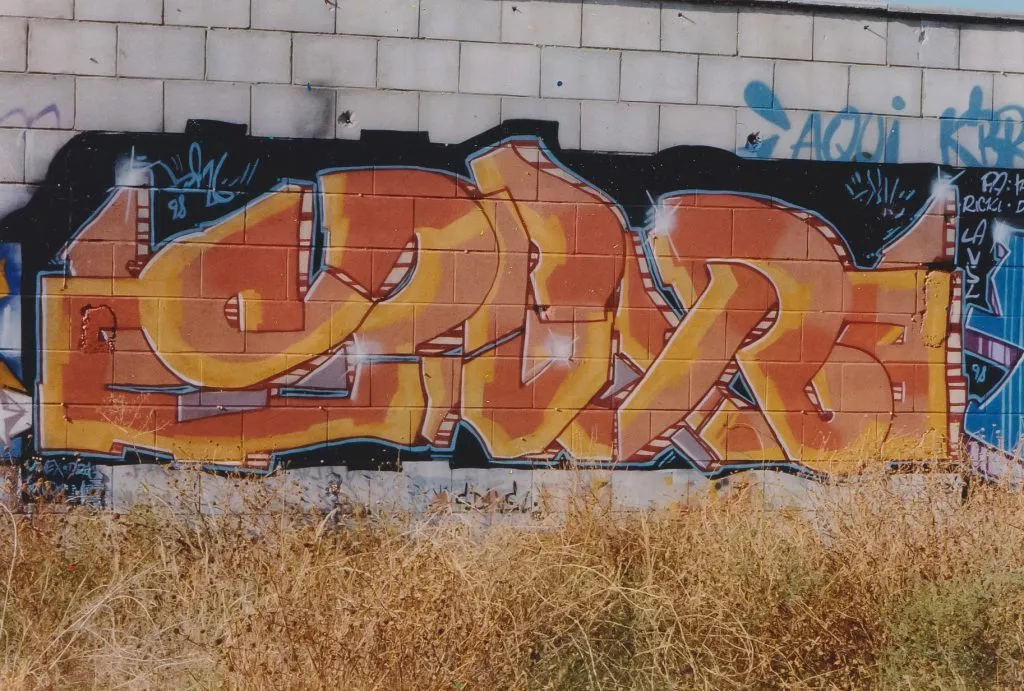
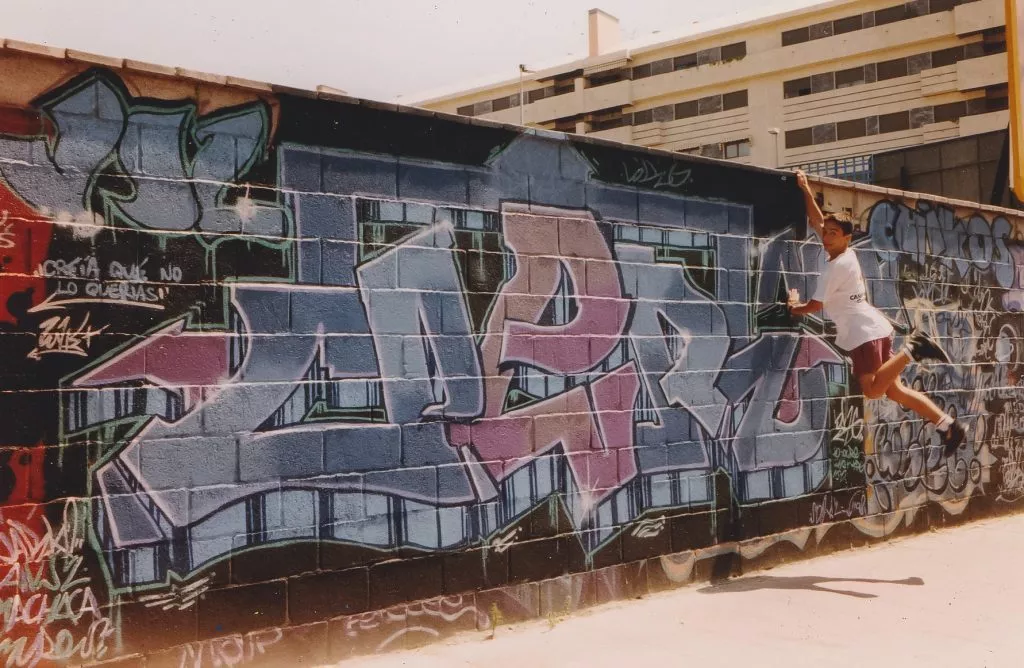
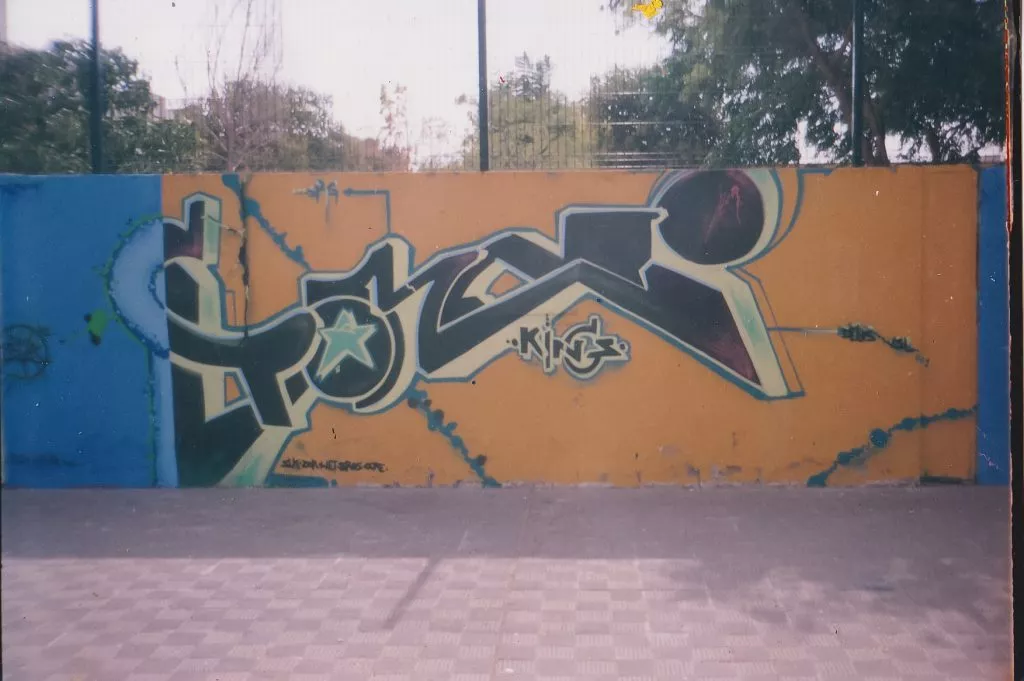
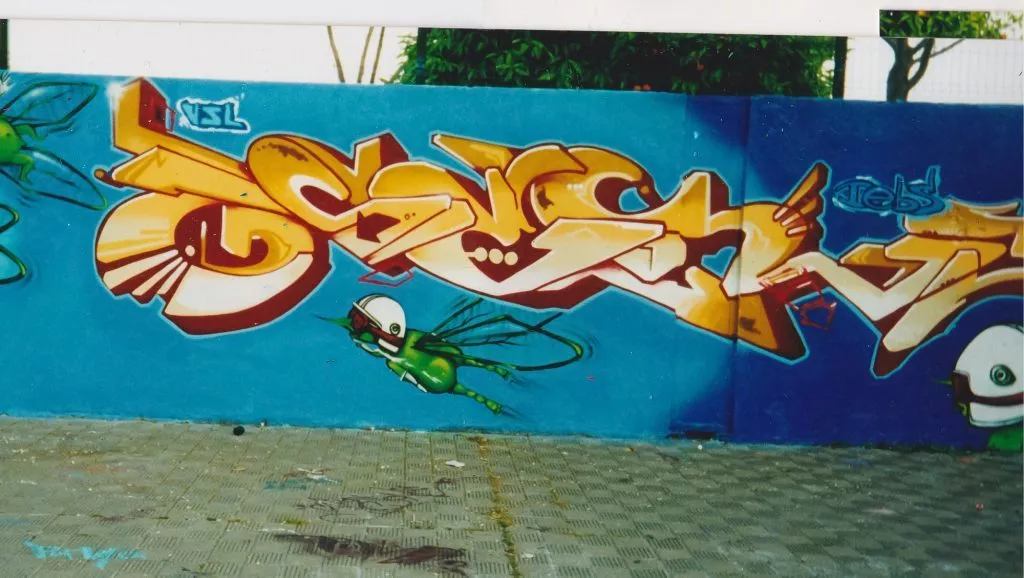
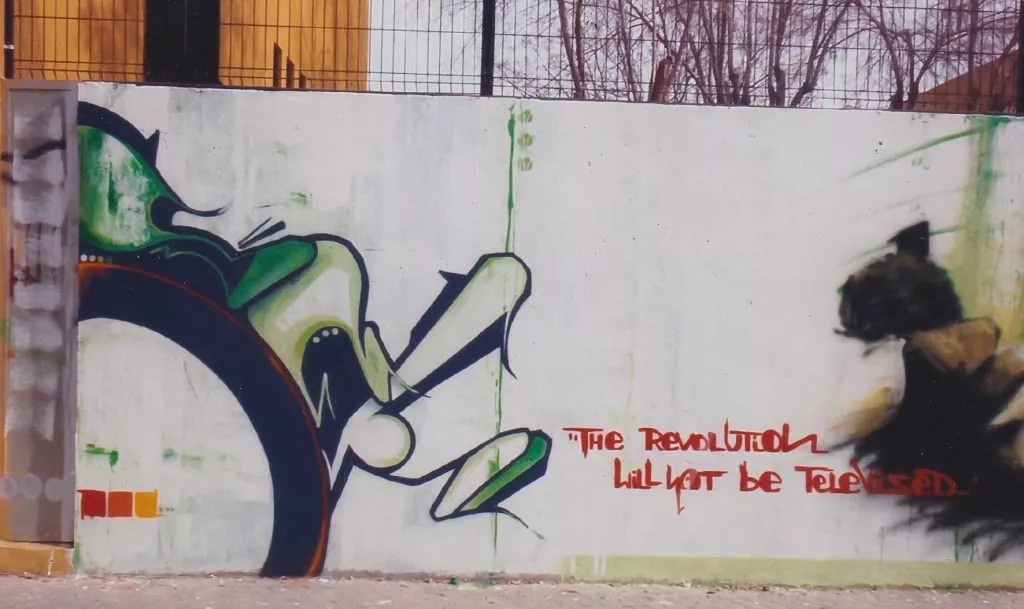
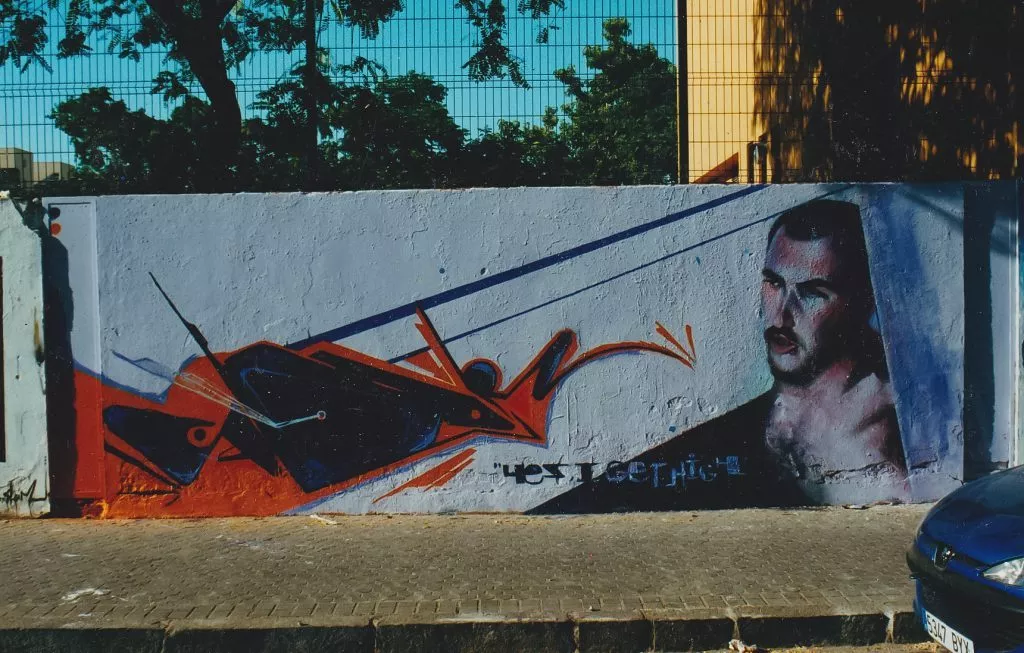
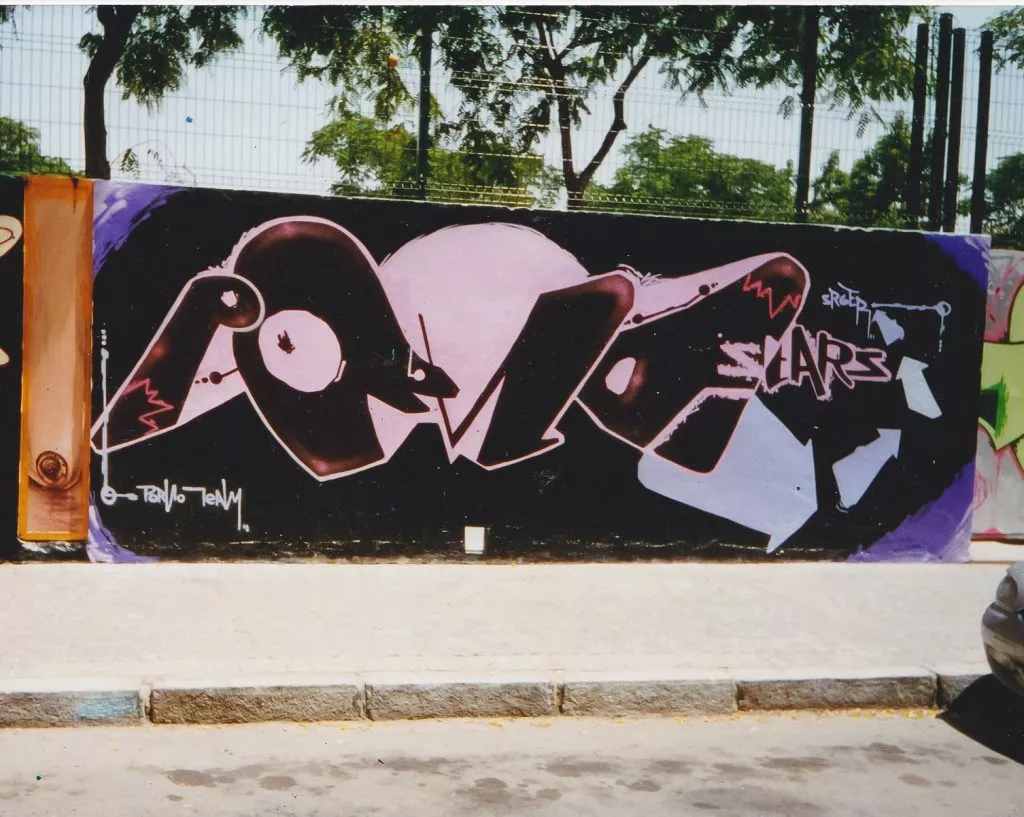
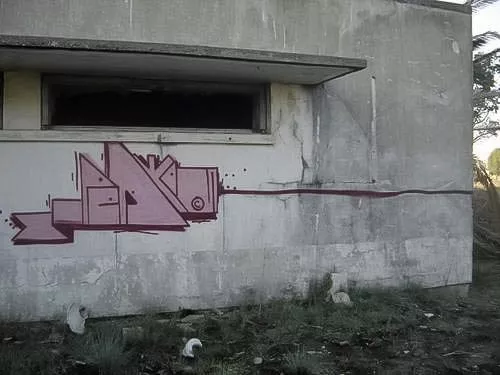
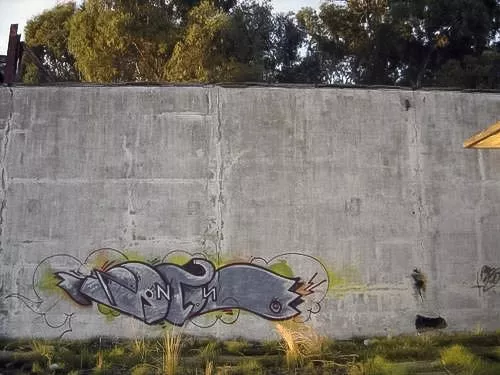
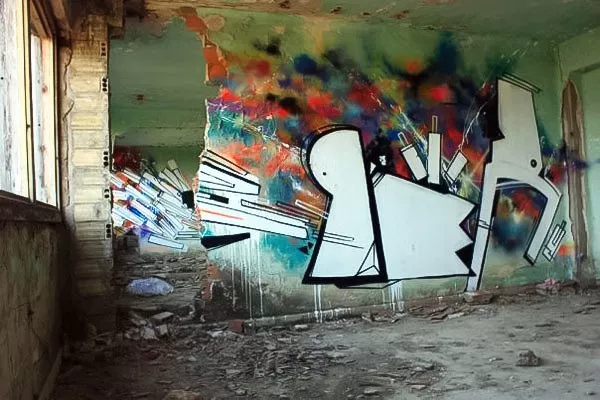
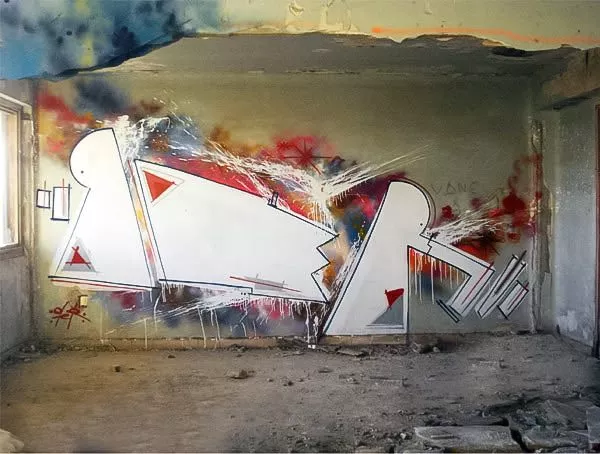
Graffiti writing leading to other art forms
From 1999 until 2001 SRGER decided to study visual arts at The Seville School of Art, and was trained after as a web and graphic designer. During those years at the art school he also studied art history, discovering modern painting. Besides his art practice, he went on doing pieces alone and with other writers outdoors, trying out new shapes and forms of lettering. Graphic design influenced him a lot in terms of space, how to create a white space, compositions and colors, he says. It led him to see typographies in a differently way. In the following years, he started to keep apart his different art works. It was clear to him that one part of his work was to paint graffiti pieces in his surroundings or in other cities and the other part had to do with his art work created in the studio. SRGER explains: „The two are influenced by each other, it would be impossible if it were not so. At that time in early 2000, I was more interested in reading about art, visiting art spaces and discovering art works by contemporary artists. I was also dedicated to graphic design, and I think that influenced my painting. I started to pay more attention to the walls and what I could offer to those spaces, playing with the architecture for each new project.“
From 2012 SRGER started to create pieces without readable letters, only painting some simple imperfect geometric forms, traces of spray paint, scribbles, dots and lines left on walls in abandoned places. Simple, visibly spontaneous and using only pure primary colours and black and white, those pieces were minimalistic. Colored forms and gestural traces were placed in an airy, loosely composition without background on different spots in an architecture, playing with the surrounding elements. The texture of the wall, structures or forms of architectural elements like doors or windows were taken into consideration for the painting in situ. Verticals or horizontal lines around, certain proportions, traces on the walls etc were defining the exact emplacement for SRGER’s painting and influencing the choice of his painted shapes and lines. In a playful simple visual language, his paintings at that time were like an intervention in situ. „During this period I started to use only yellow, red, blue, black and white. I began to frame the pieces later a little unconsciously, perhaps to give more weight and to imagine a format“, SRGER explains today.
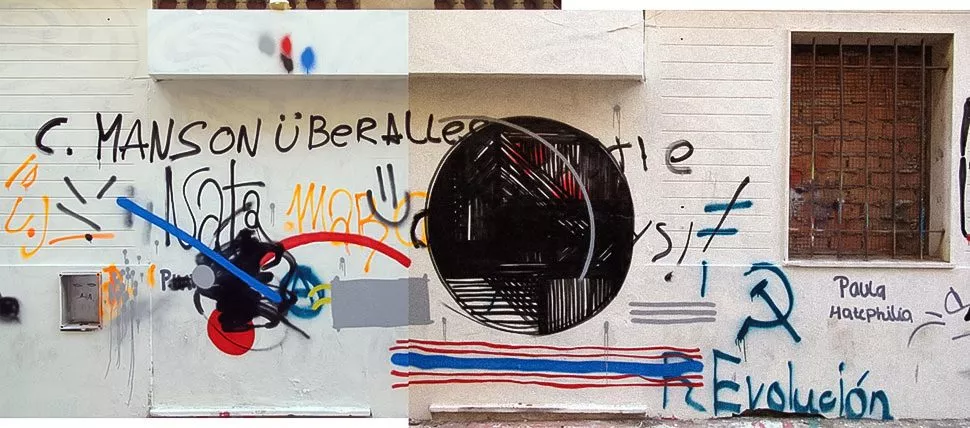
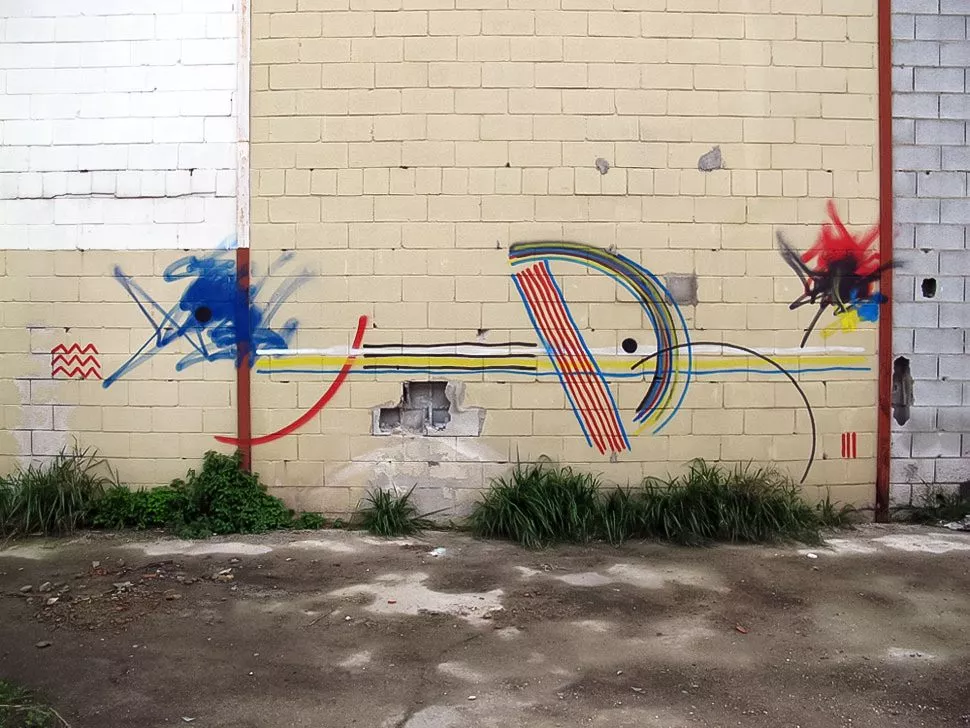
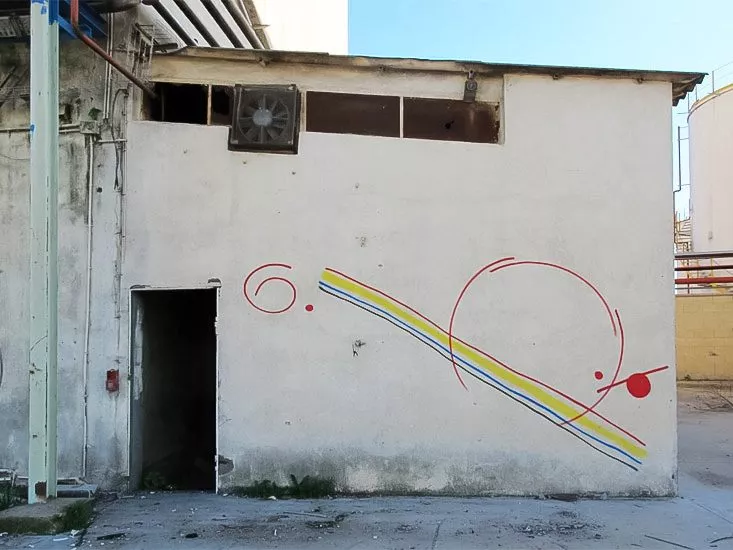
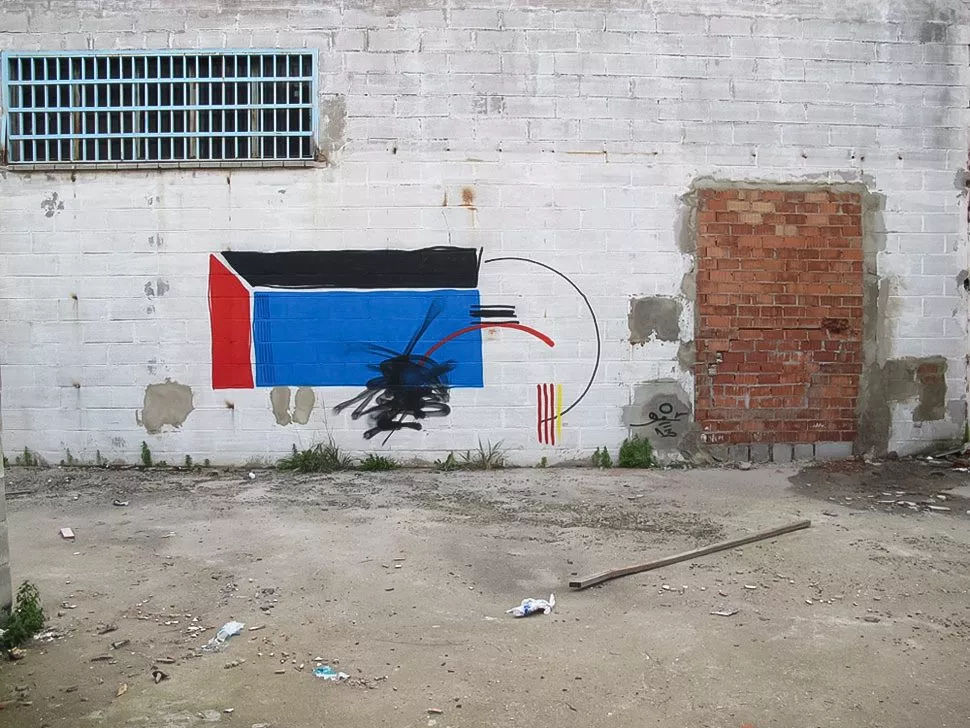
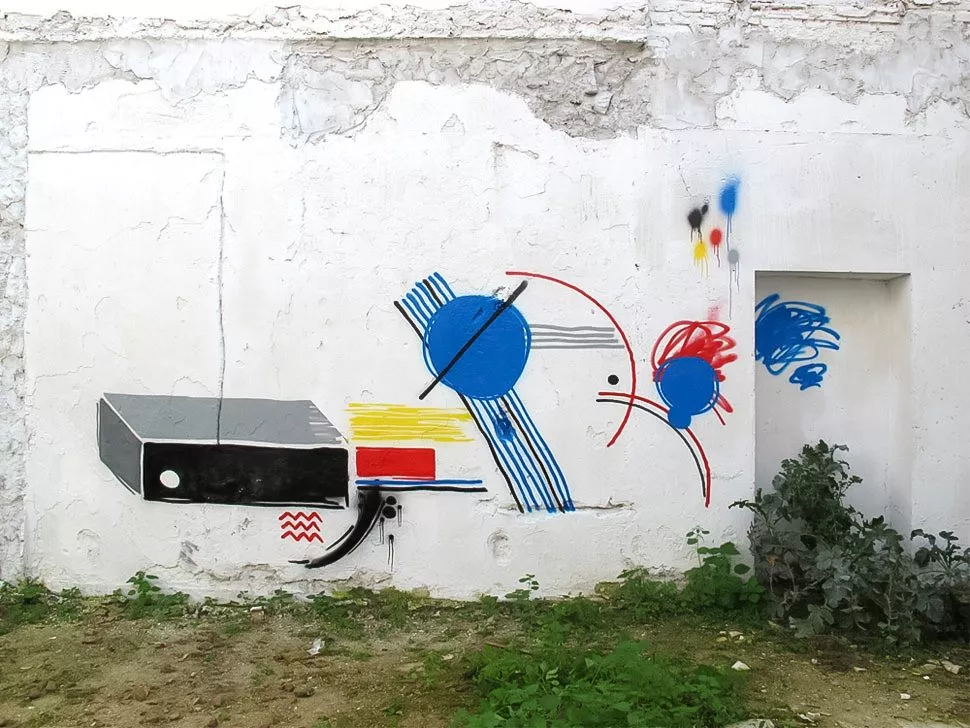
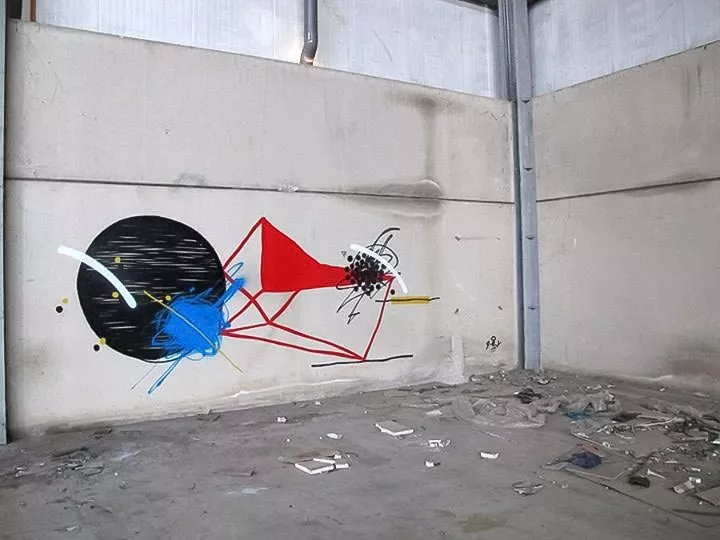
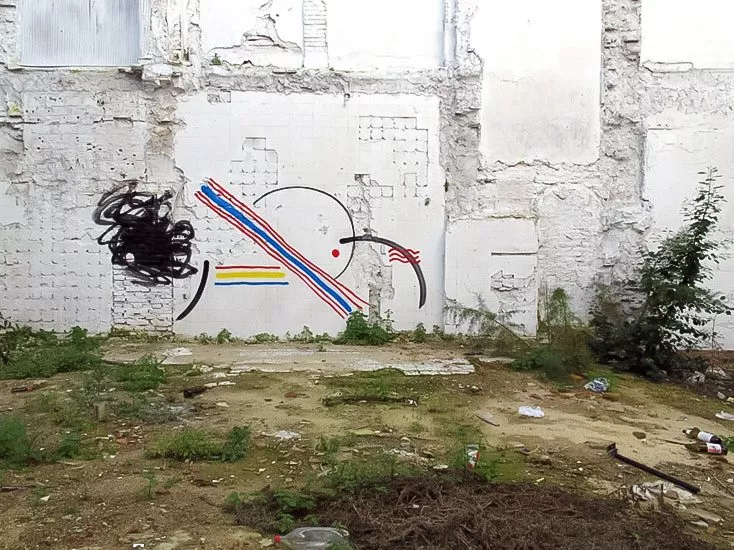
SRGER started to create invisible or visible rectangular frames for his wall paintings, like panoramic canvas formats on a wall. With the use of pure primary colours, his compositions of that time are filling out the whole imaginary frame with many color fields and lines, sometimes including empty spaces of the background in the whole composition. The format, the technique and some gestural line drawing remind of a graffiti piece. But at a formal level his compositions and vibrant colour-use are reminiscent of some abstract works by modern painters like Kandinsky, Klee or Mirò. SRGER uses playfully different colours, sometime picking up colour shades of the surrounding of the abandoned area. Some of his forms of the different fields in a piece seem to correspond to shapes of things lying around in the space. Therefore, his pieces in situ adapt to their surrounding – at least a bit – adding another perspective to the space around the pieces conceived especially for it.
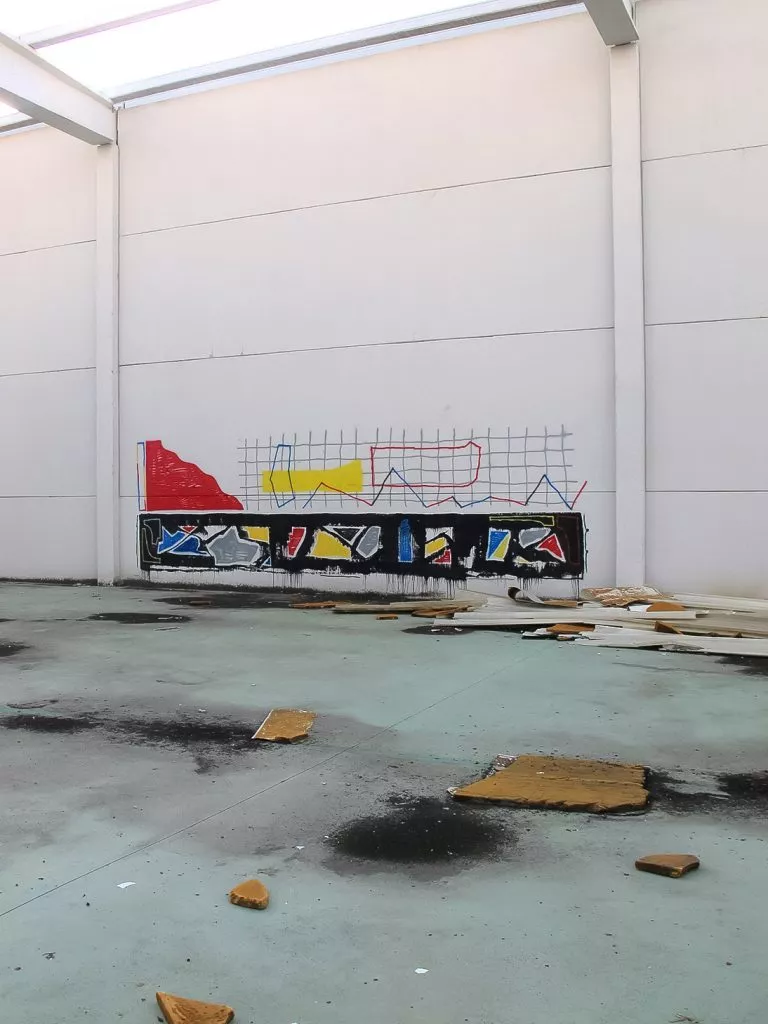
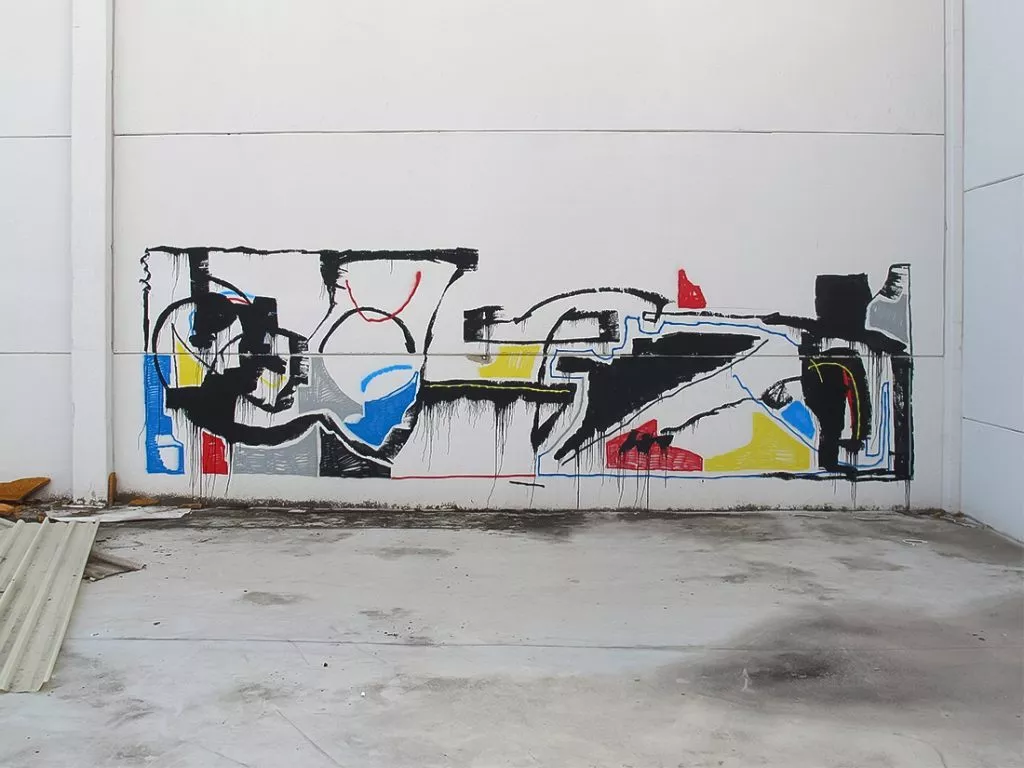
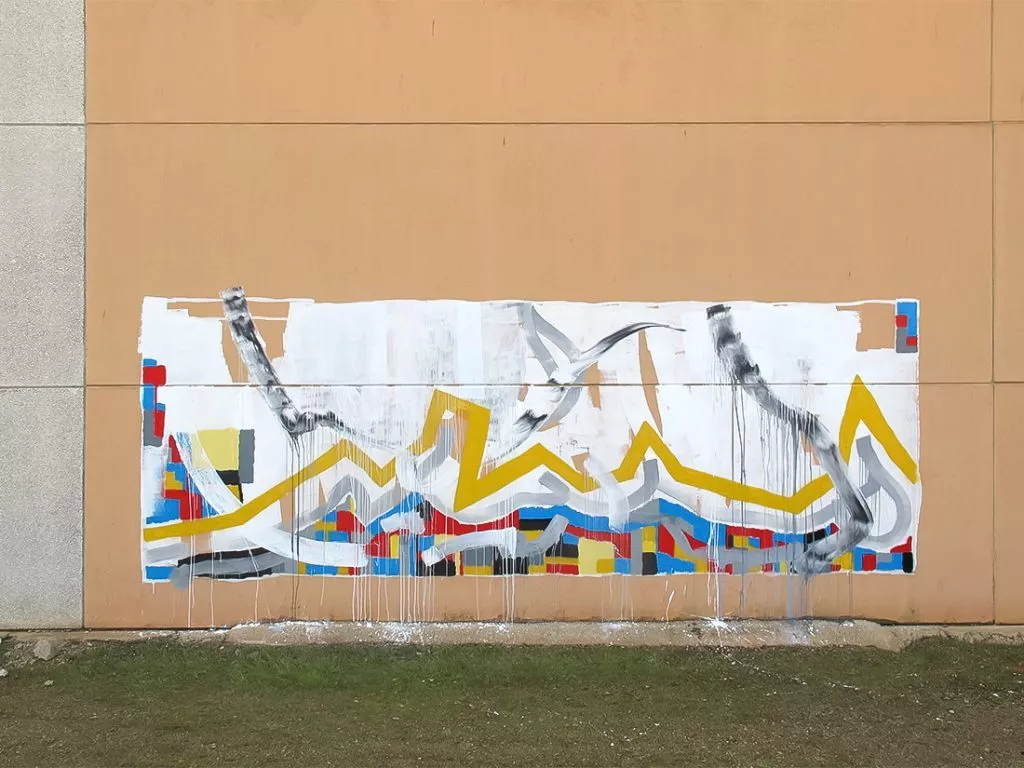
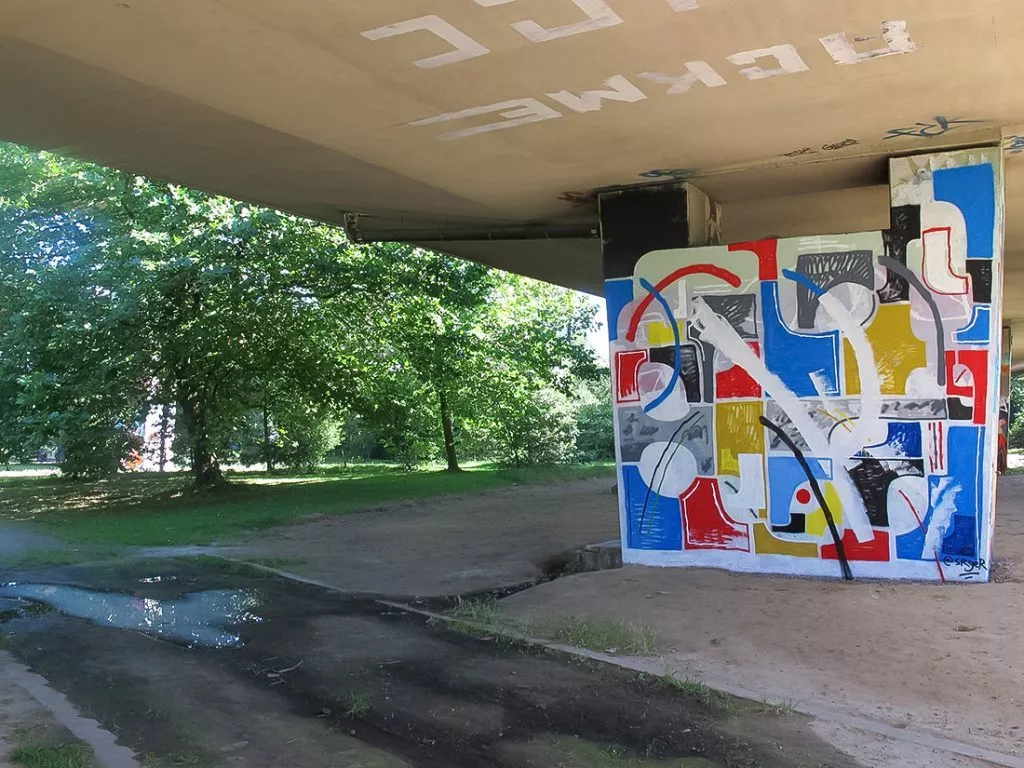
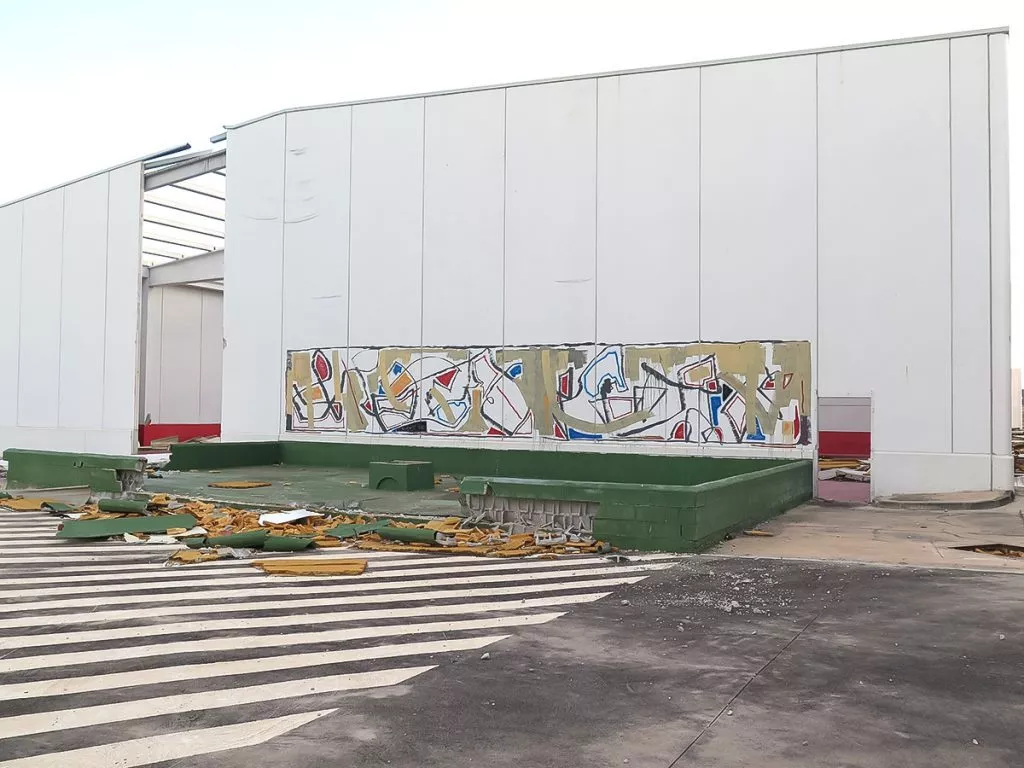
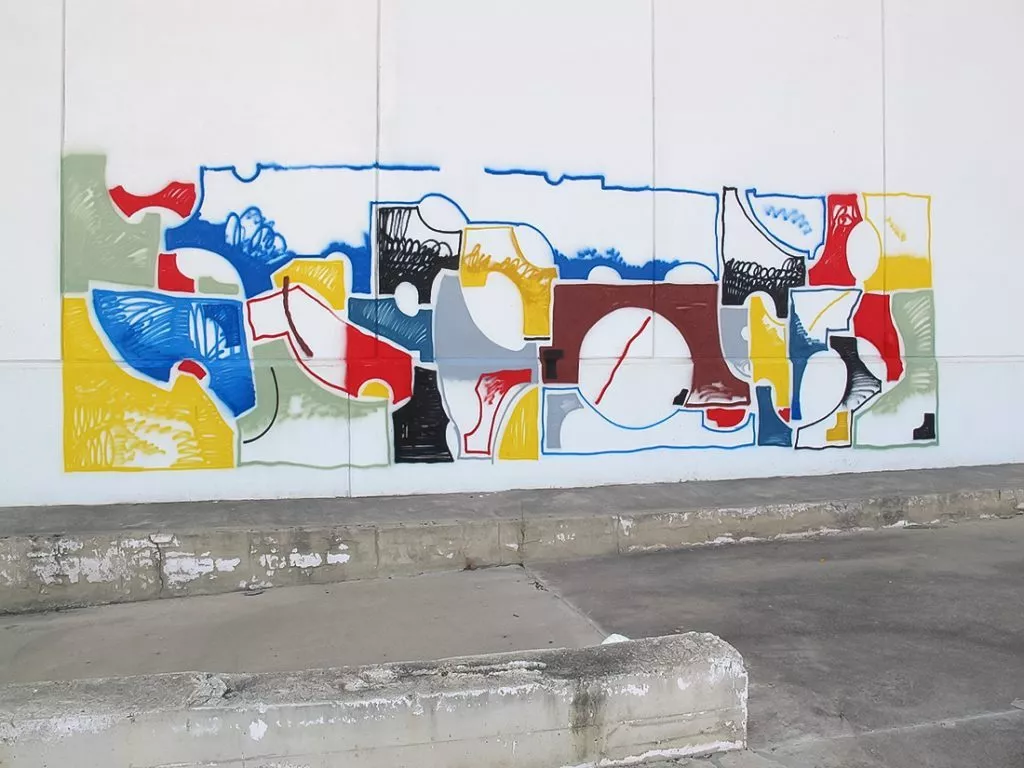
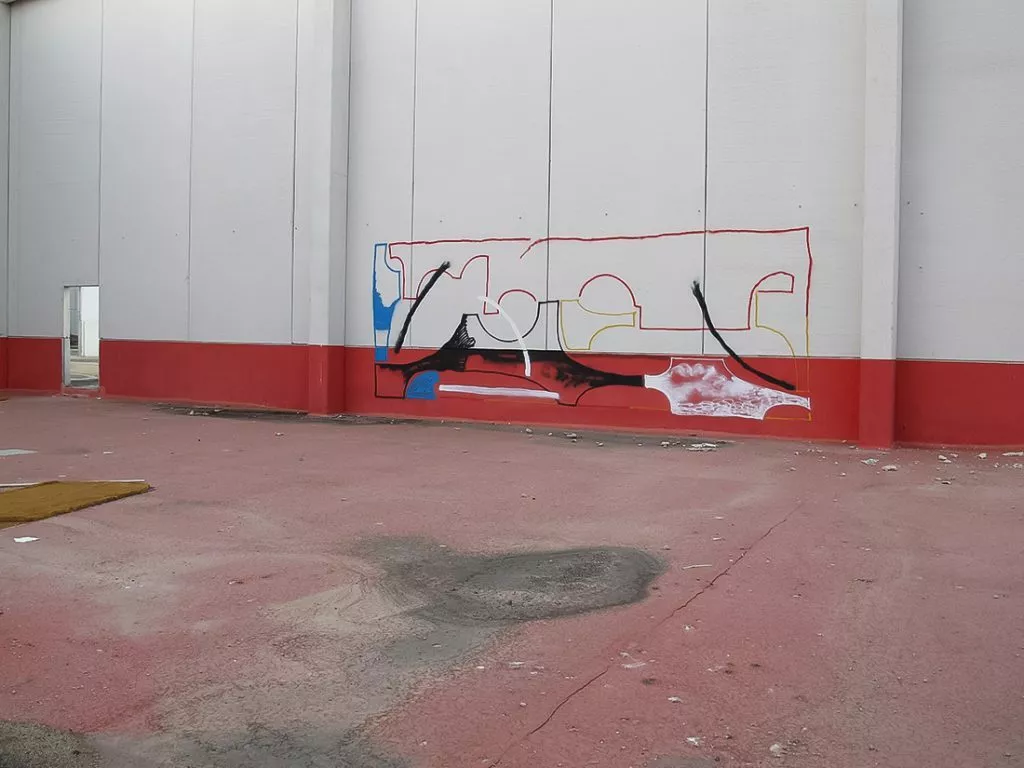
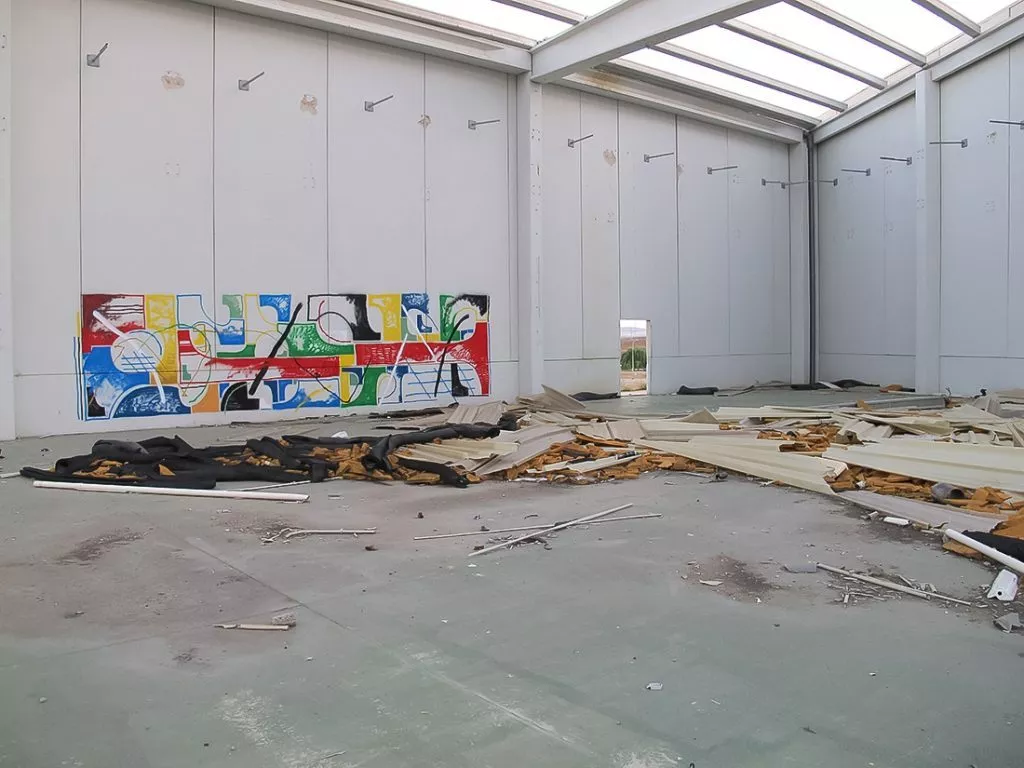
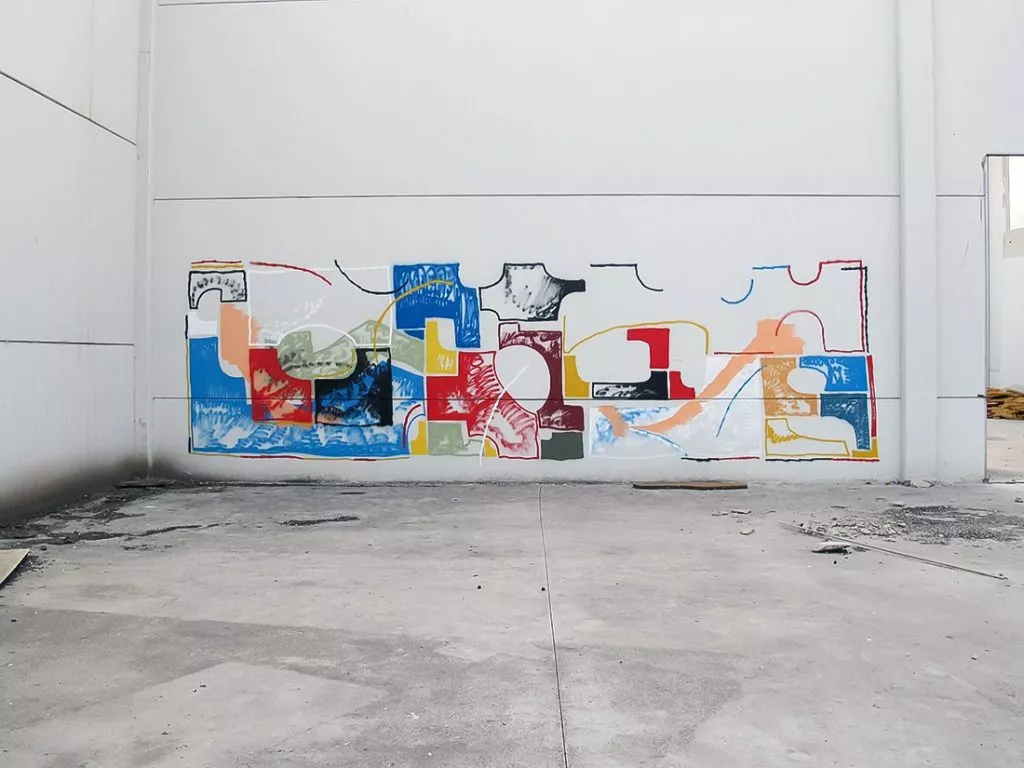

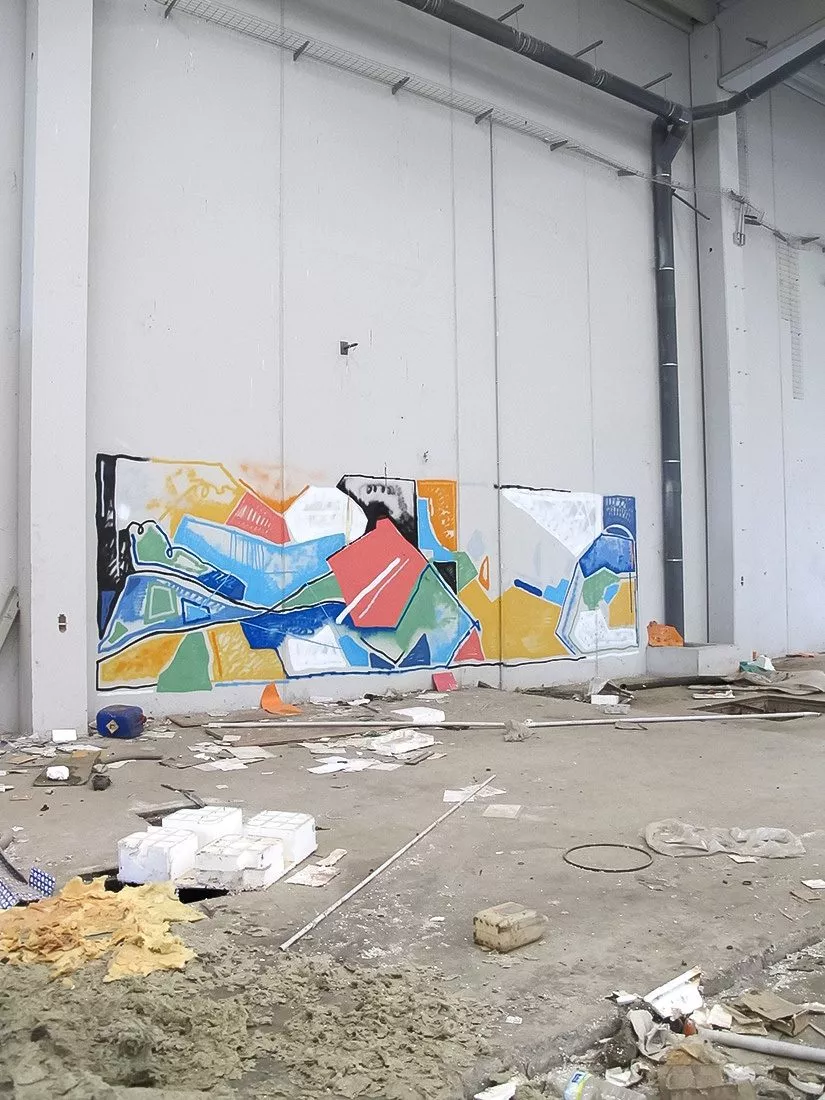
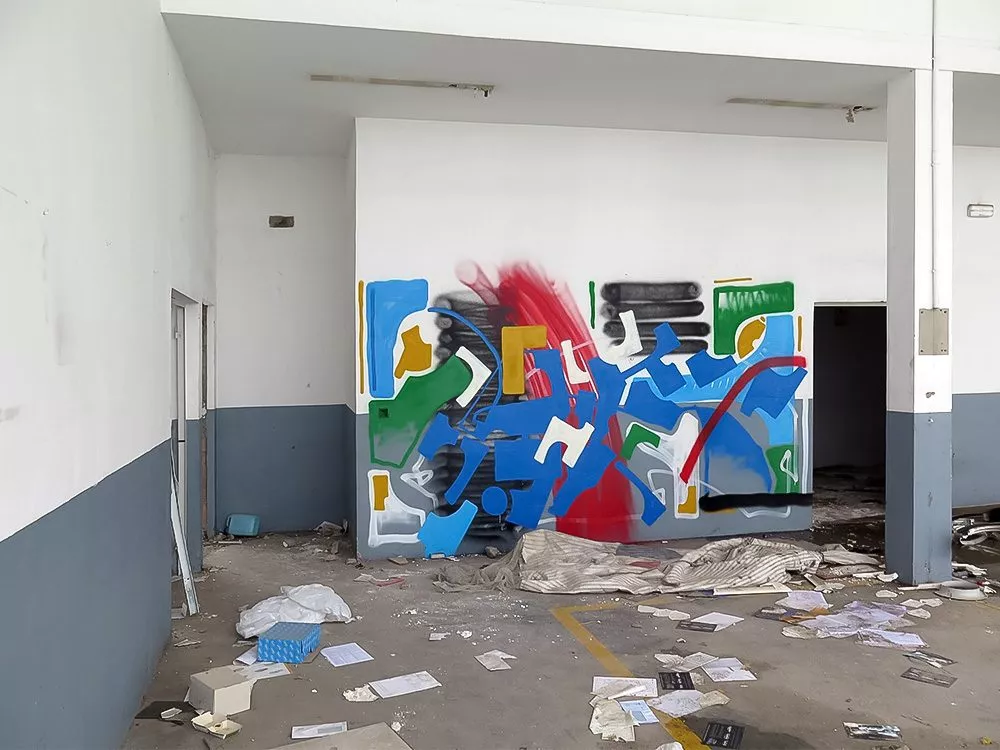
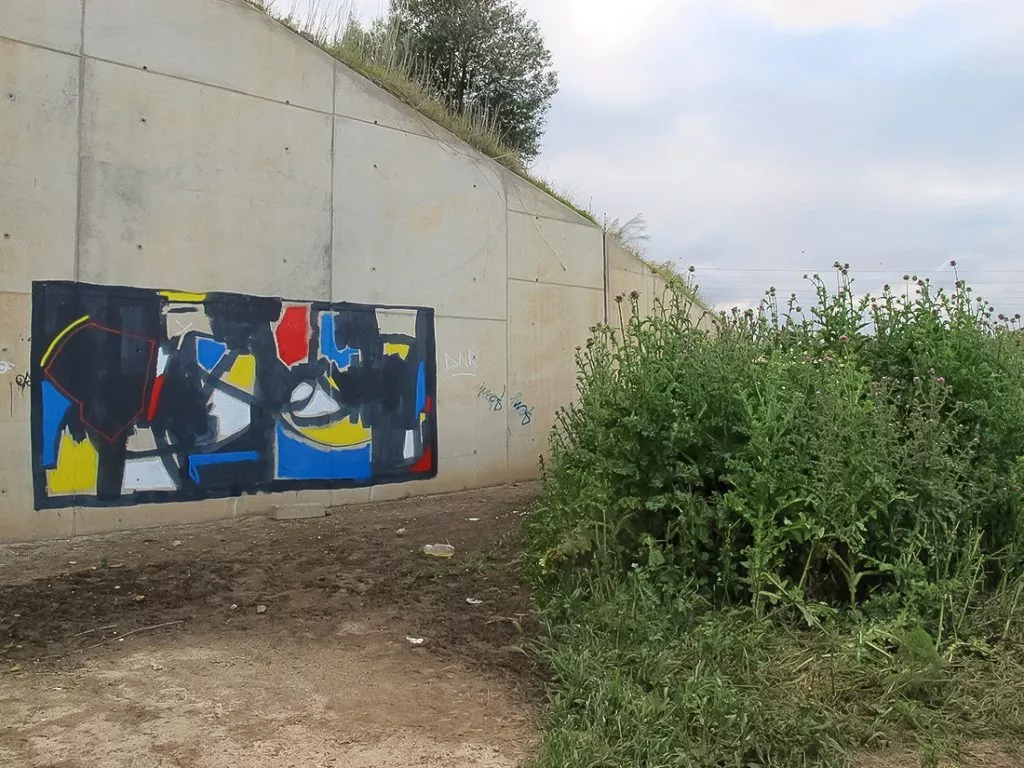
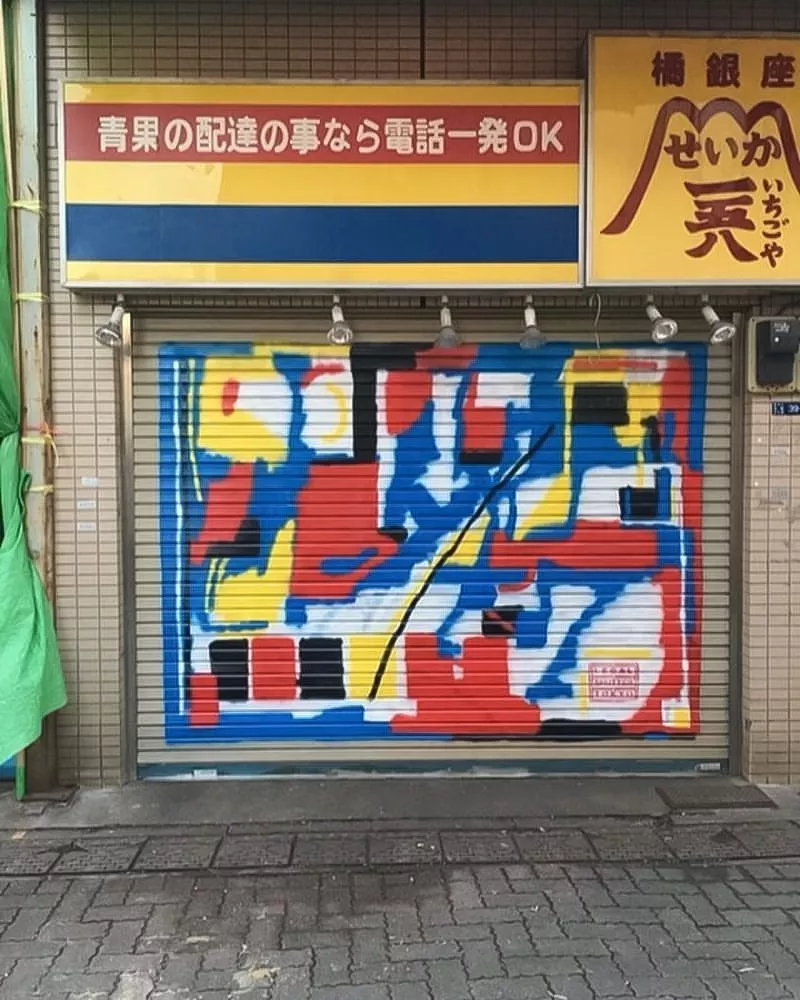
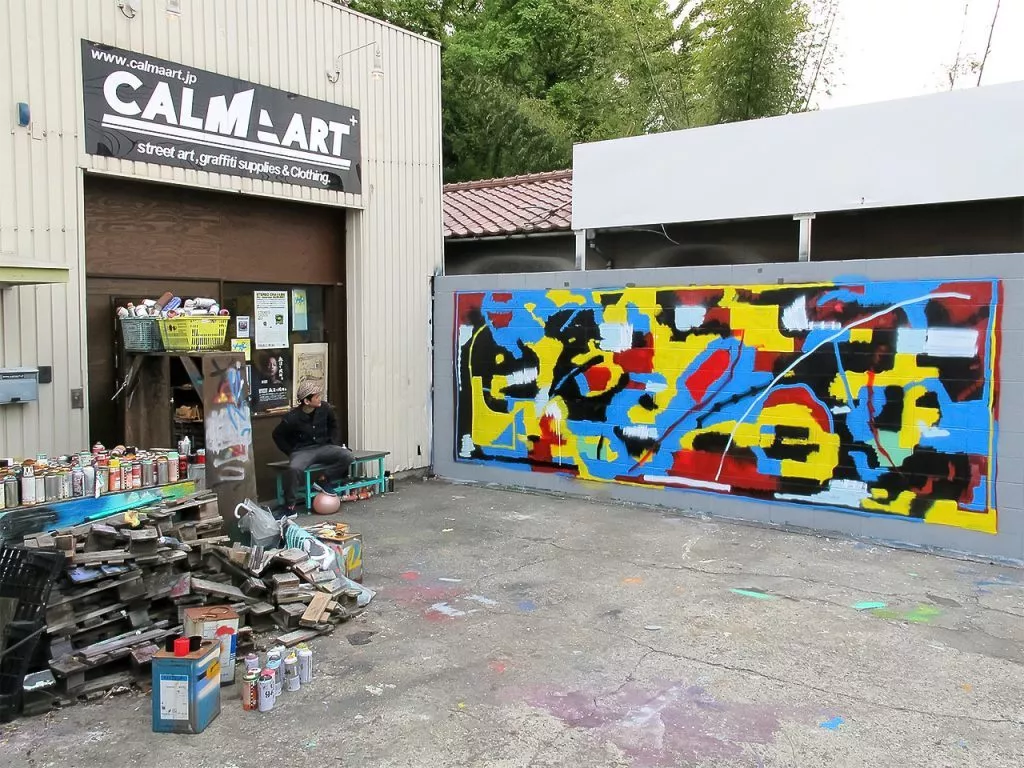
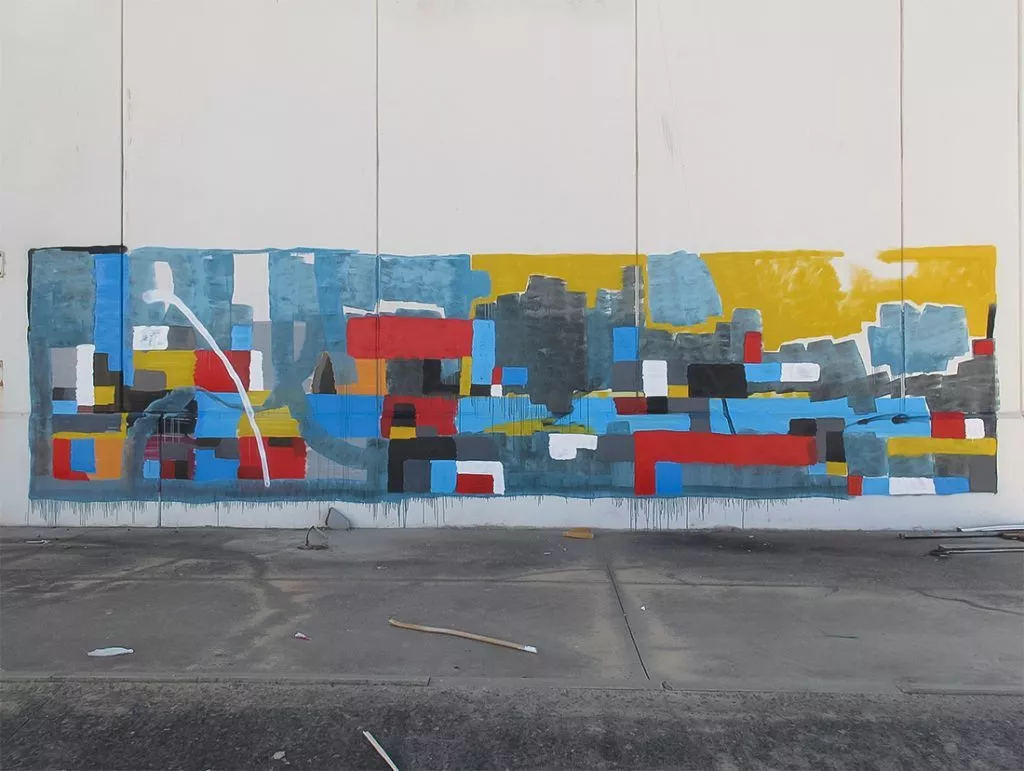
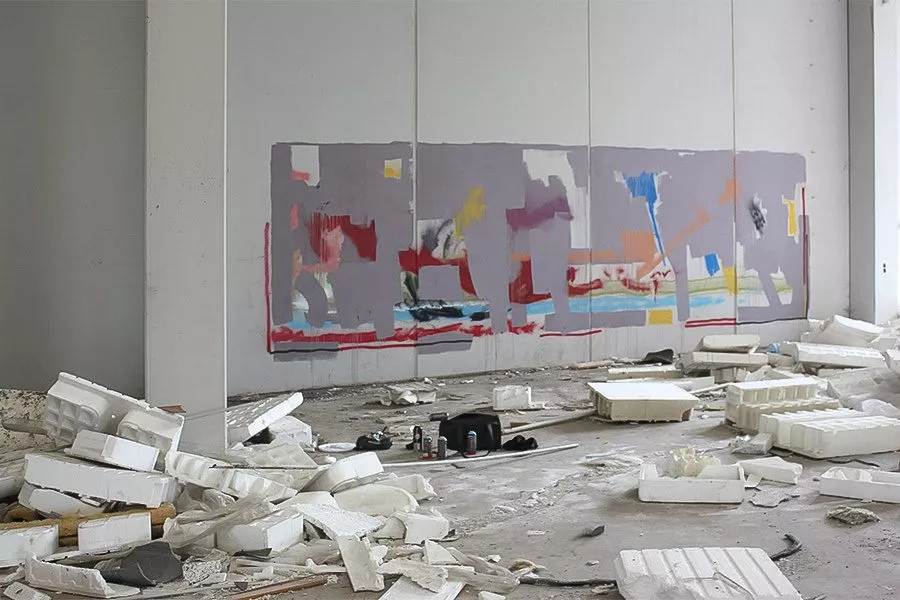
Besides the architecture where he will paint, SRGER finds many sources of inspirations just in the streets: „I think I’m mostly inspired by the little things I can find in the public space, day to day. I tend to take a lot of photographs in public space, these little accidents in the streets, connections of objects and shapes are very inspiring to me, both in composition and color. This is present in every moment.“ Photography is an important tool for the artist. His relationship with photography is purely documentary, he started taking pictures to document his works and processes. And the mediated image of an art work, outdoor or indoor, is the photograph of it.
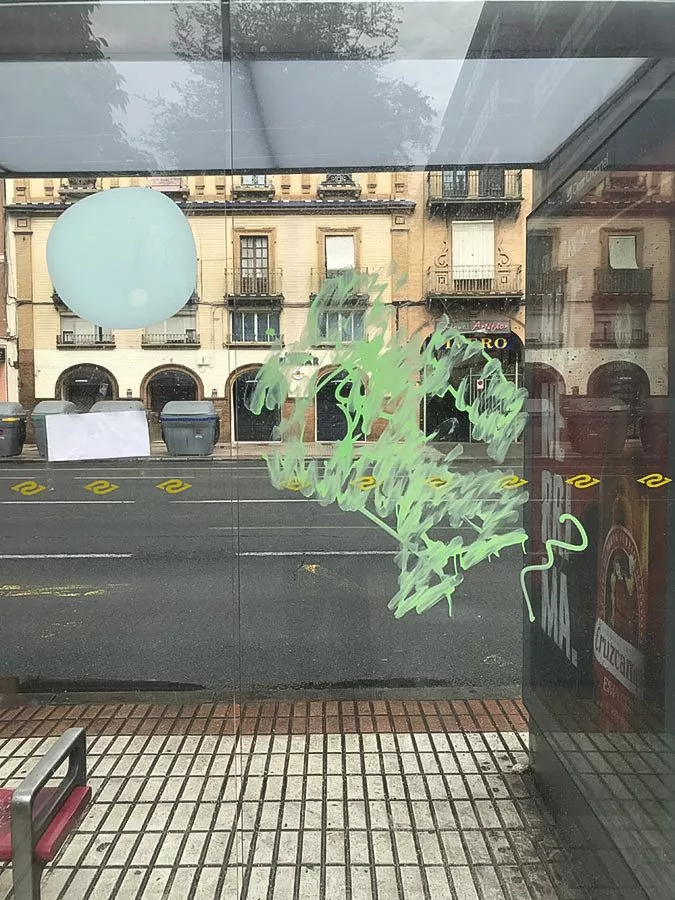
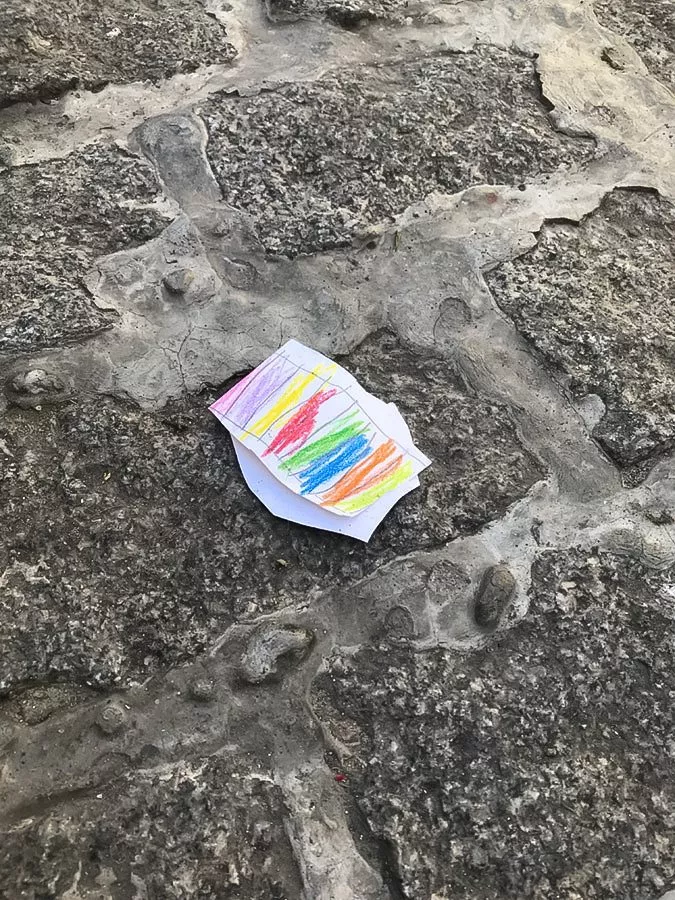
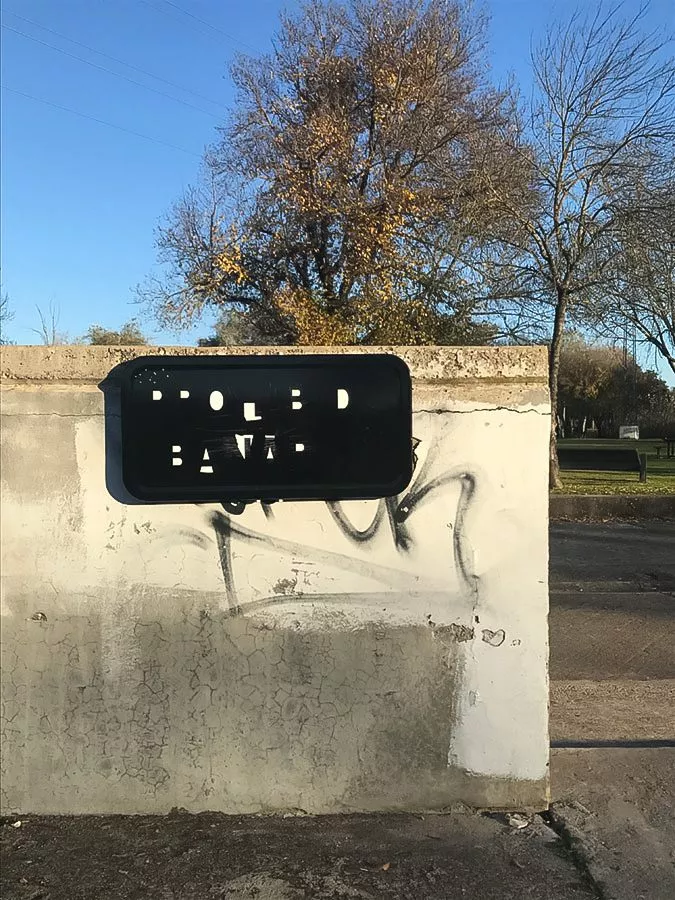
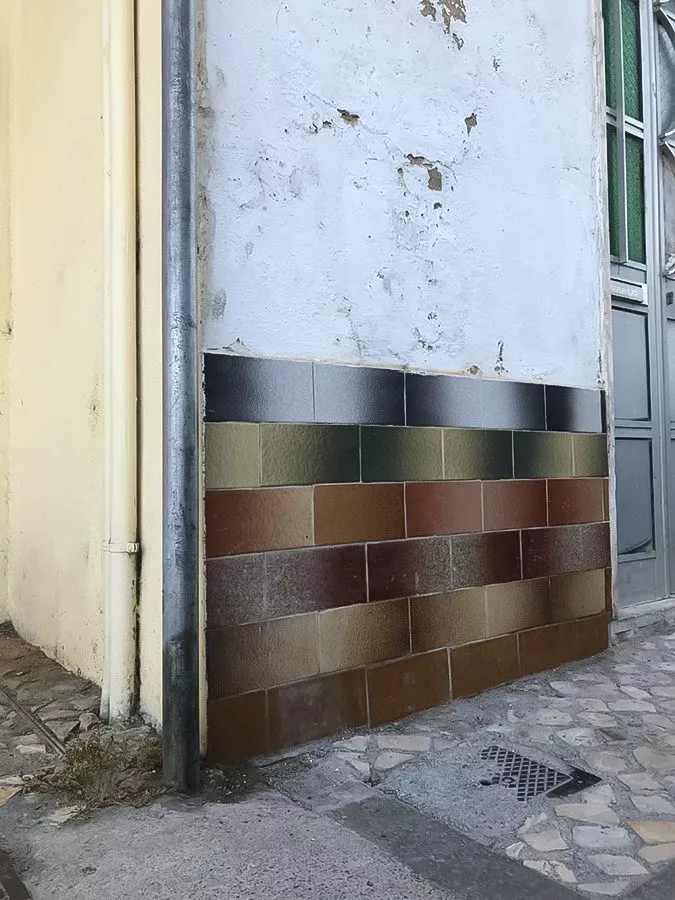
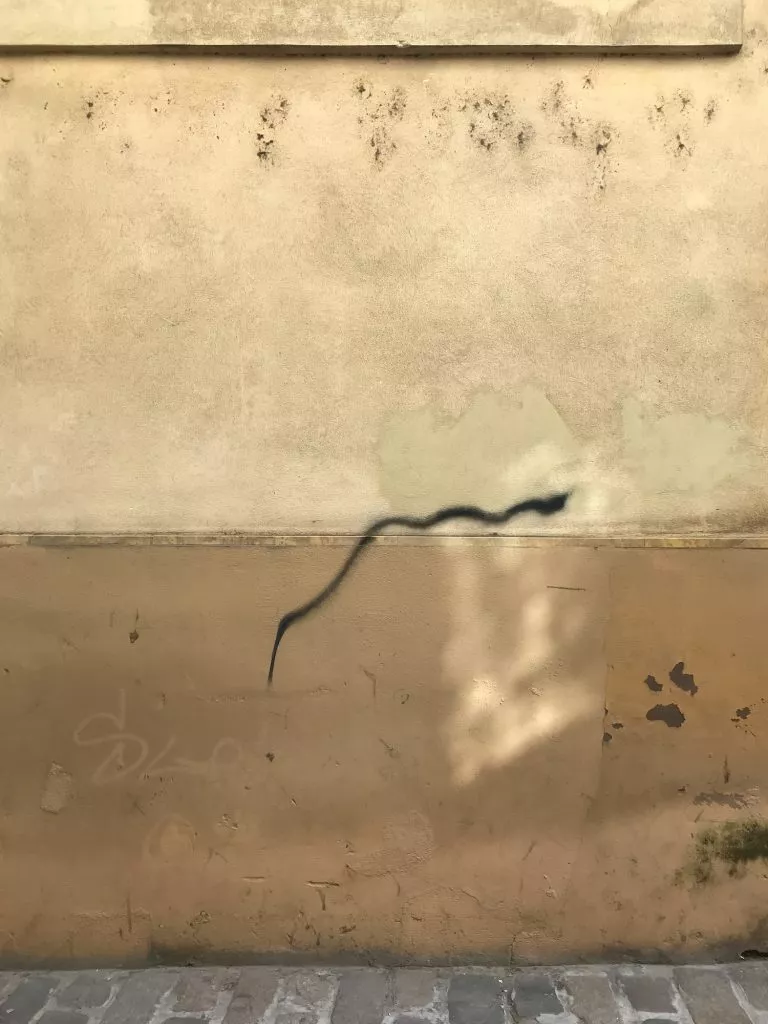
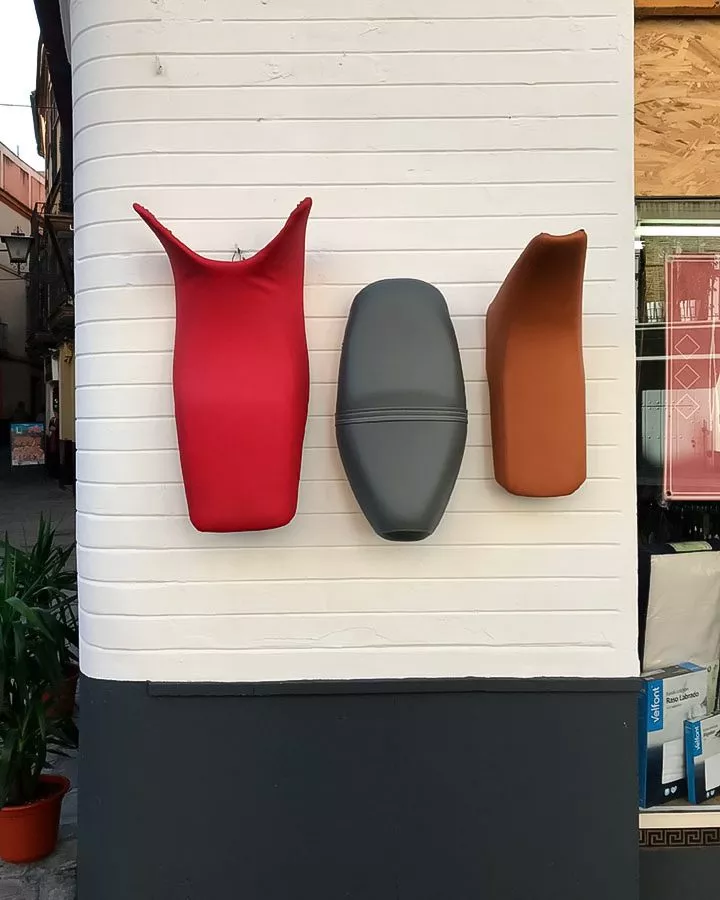
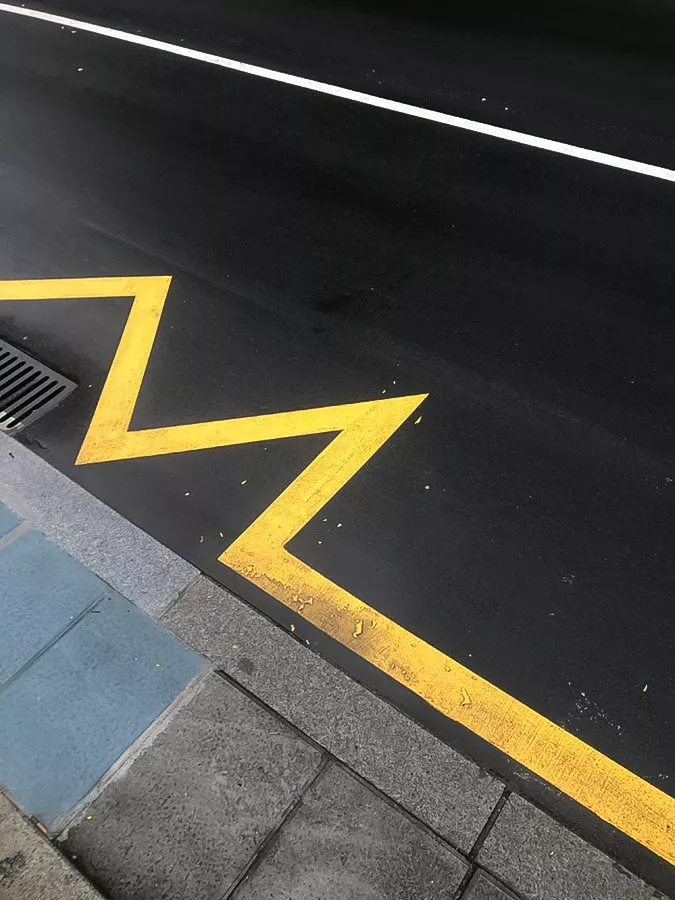
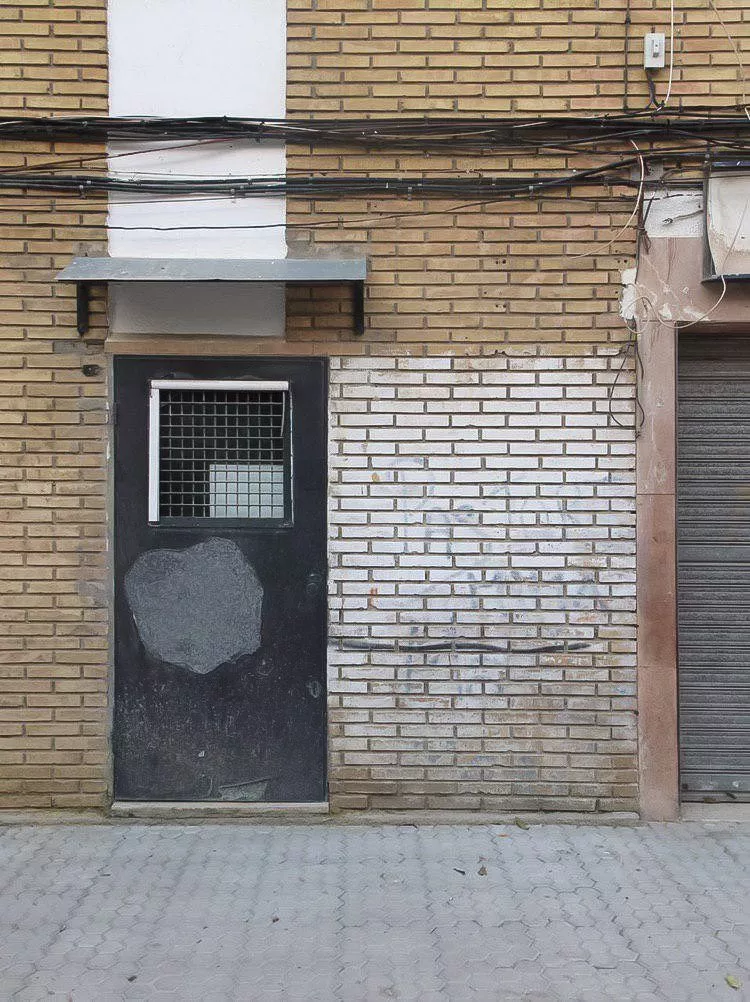
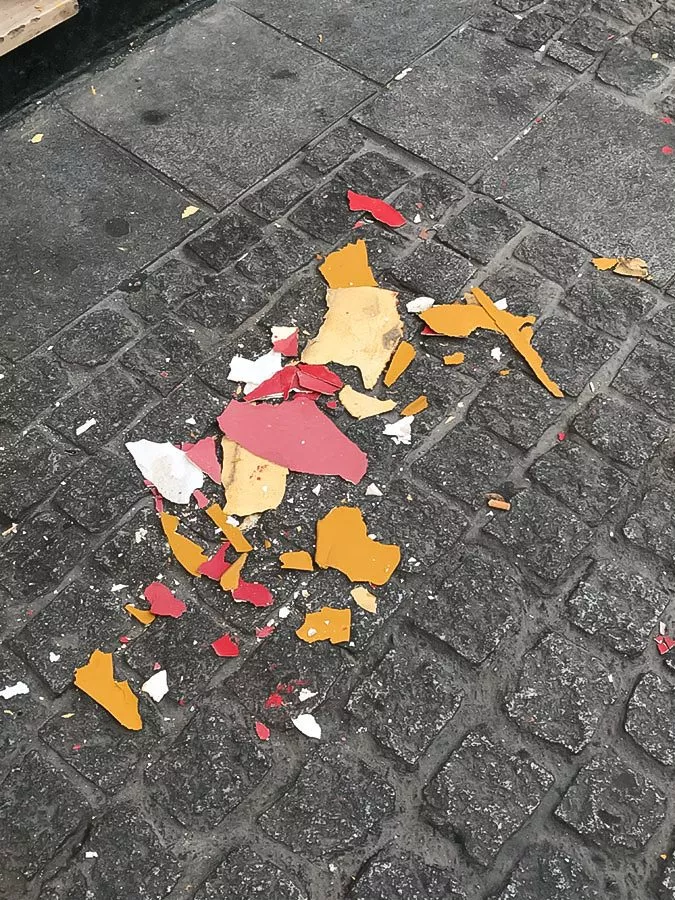
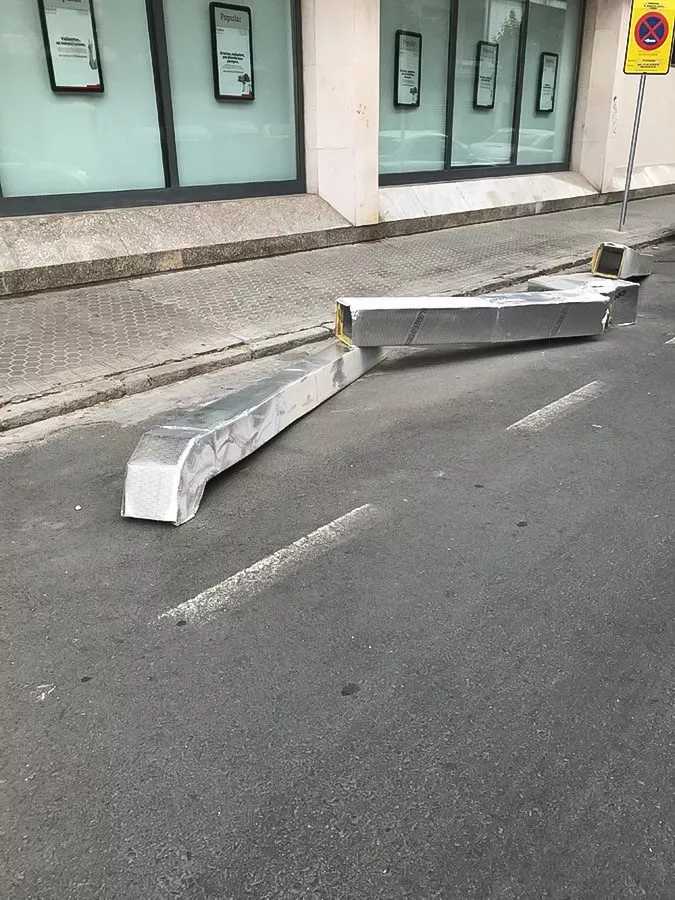
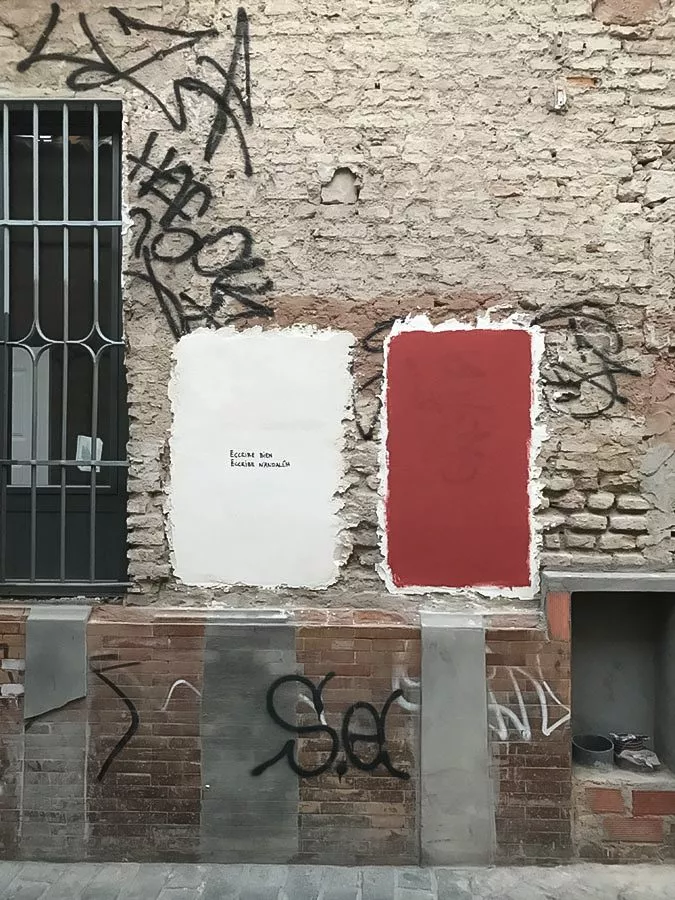
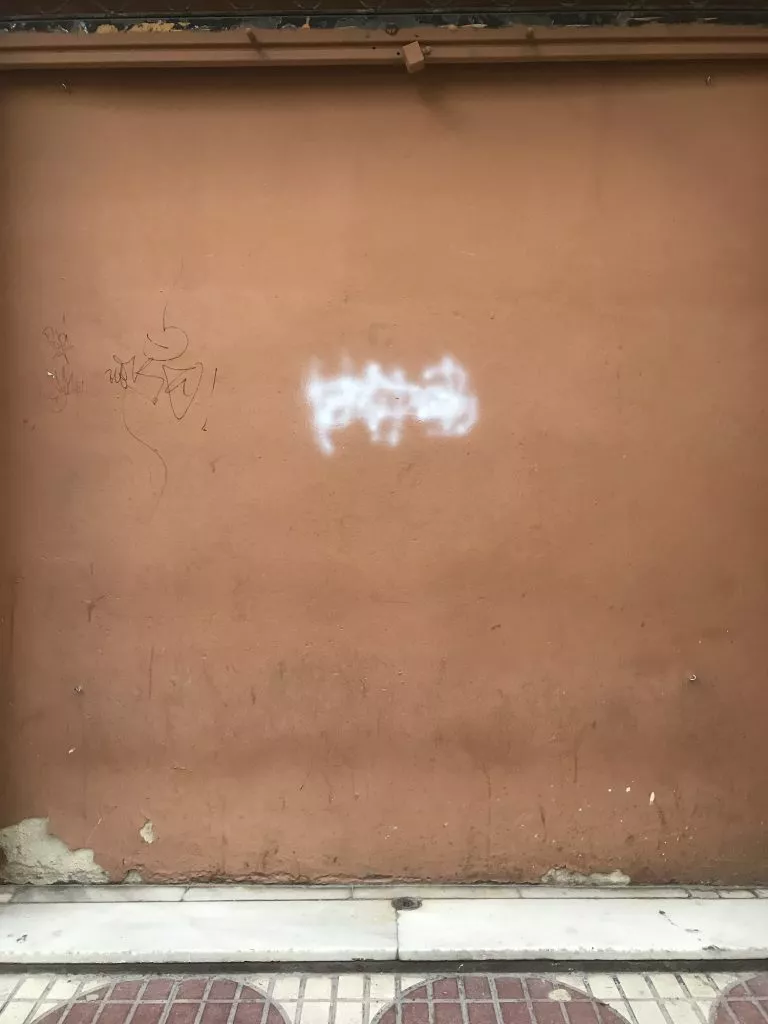
Post Graffiti/Lyrical abstraction/Action Painting
In later works SRGER is pushing the gestural aspect of his work further, including more spontaneous executed lines, reminding scribbles with a black pen, graphic doodles. Big scribbled lines are partly covering the colored fields or drawn around forming an organized clutter of lines, dynamic and adding movements to the whole piece. The lines remind of handwriting. The coloured fields become the background, lines and coloured shapes mingle with each other, the boundaries get blurred. In 2020 SRGER painted his first wall based only on large scale doodles. For him it is a way to make gestures with his whole body: “It is something I transferred from my canvases to a much larger scale. Perhaps it is a way to synthesize even more…“. About the use of black lines, he adds: „I think it just came out, before the color black was anecdotal, but now it is a big part of every work. I always try to make it the last thing, since it is with this colour that I practice those gestures and movements.“
These lines and their gestural impulsive dynamic remind us of some works of Art Informel, Tachism, Lyrical Abstraction. Many of those works represented a transcript of psychomotor energies building tension between color and line. This is what SRGER is creating in his works and especially in his wall pieces the last years. Guided by intuition, spontaneity and the impulsive gesture, the material visual component of the works are only colour and lines. The artist is bursting onto any painting surface his impressions, emotions, unconscious activity, refracting them through colour fields as well as dynamic lines shaped by the momentary impulse. Painting those abstract pictures can be seen as a kind of mental improvisation. SRGER’s artworks involve the use of dabs, splotches of colour, spontaneous brushwork, scribbles and calligraphic gestures. As a form of gestural painting and expressionistic non-representational art, like Lyrical Abstraction, spontaneous improvisations and directly artistically transposed sensations are used instead of constructive and strict geometric elements of Abstract Painting. Appealing to the importance of the processual, a constant element in his work, the artist adds in a way the layer of the fourth dimension to the pictorial surface: temporality. The application of dissolving materials on the original composition promote change, transformation and generate a new composition trying to escape any exercise of control. The mutation can be seen as a beginning and an end, with an infinite narrative.
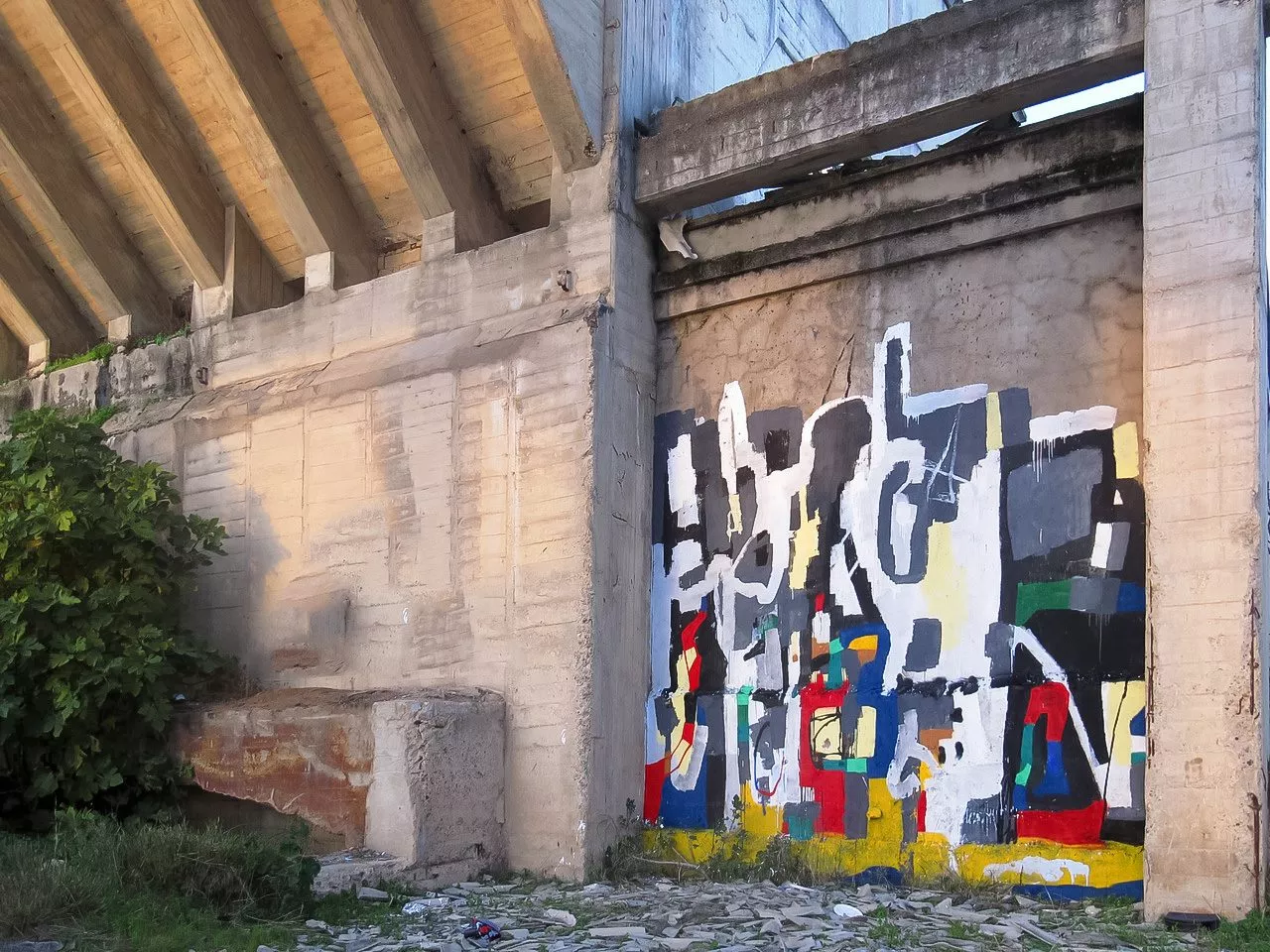
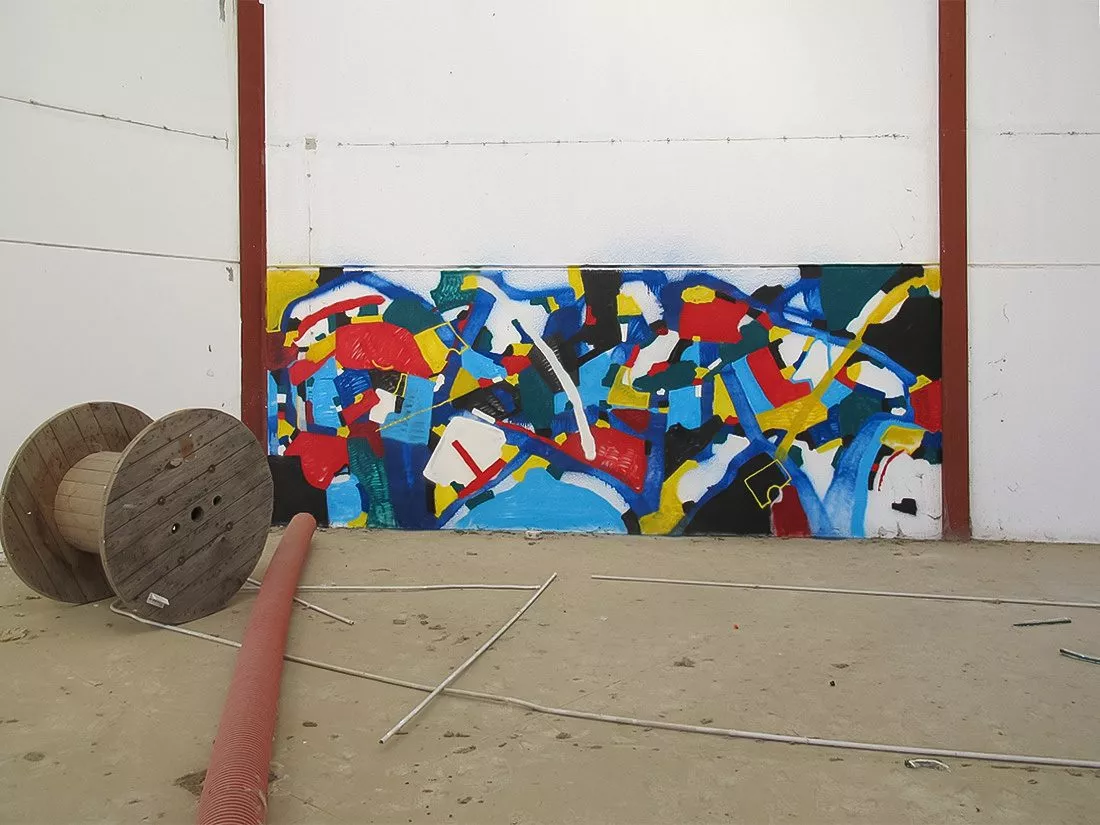
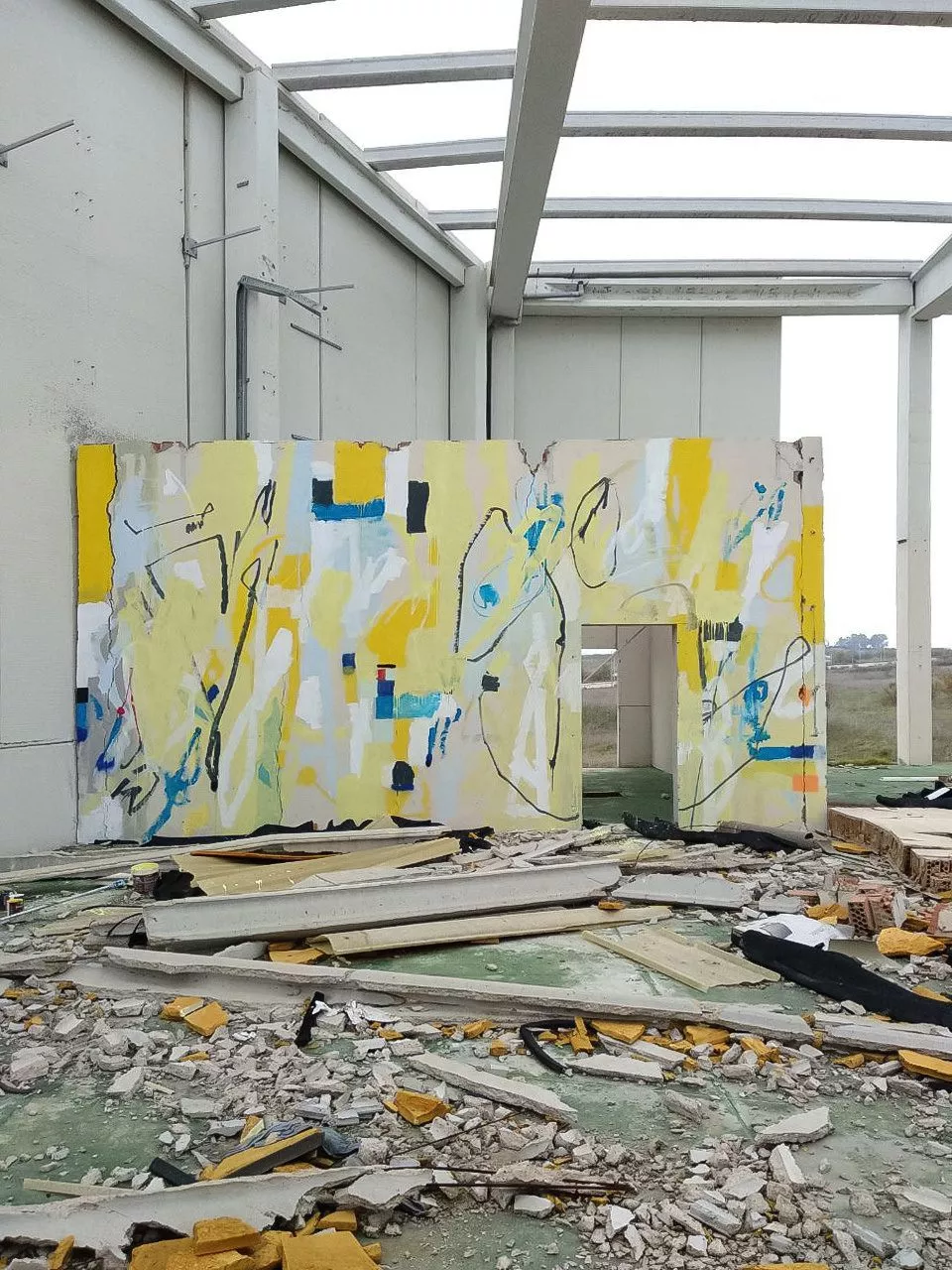
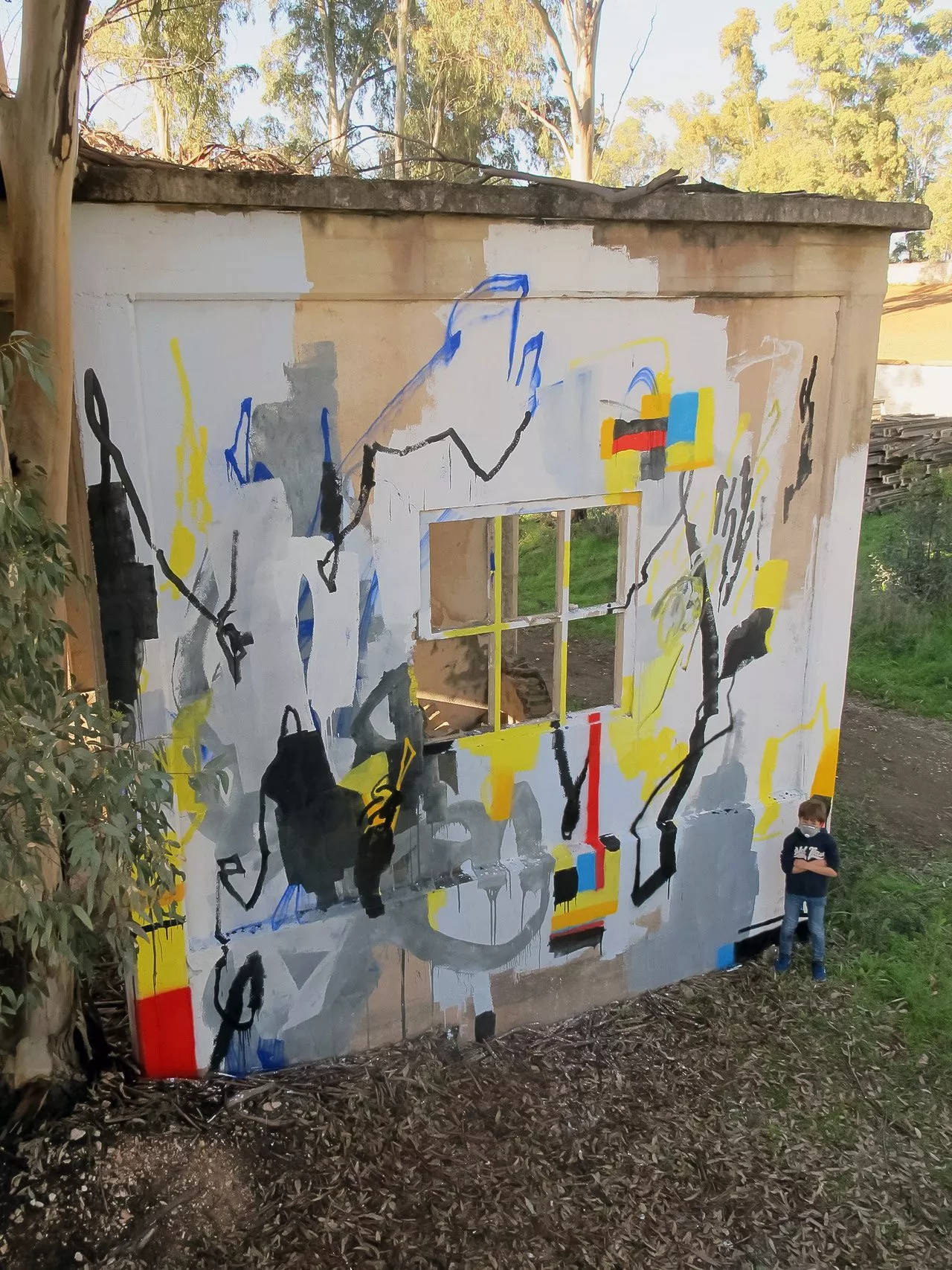
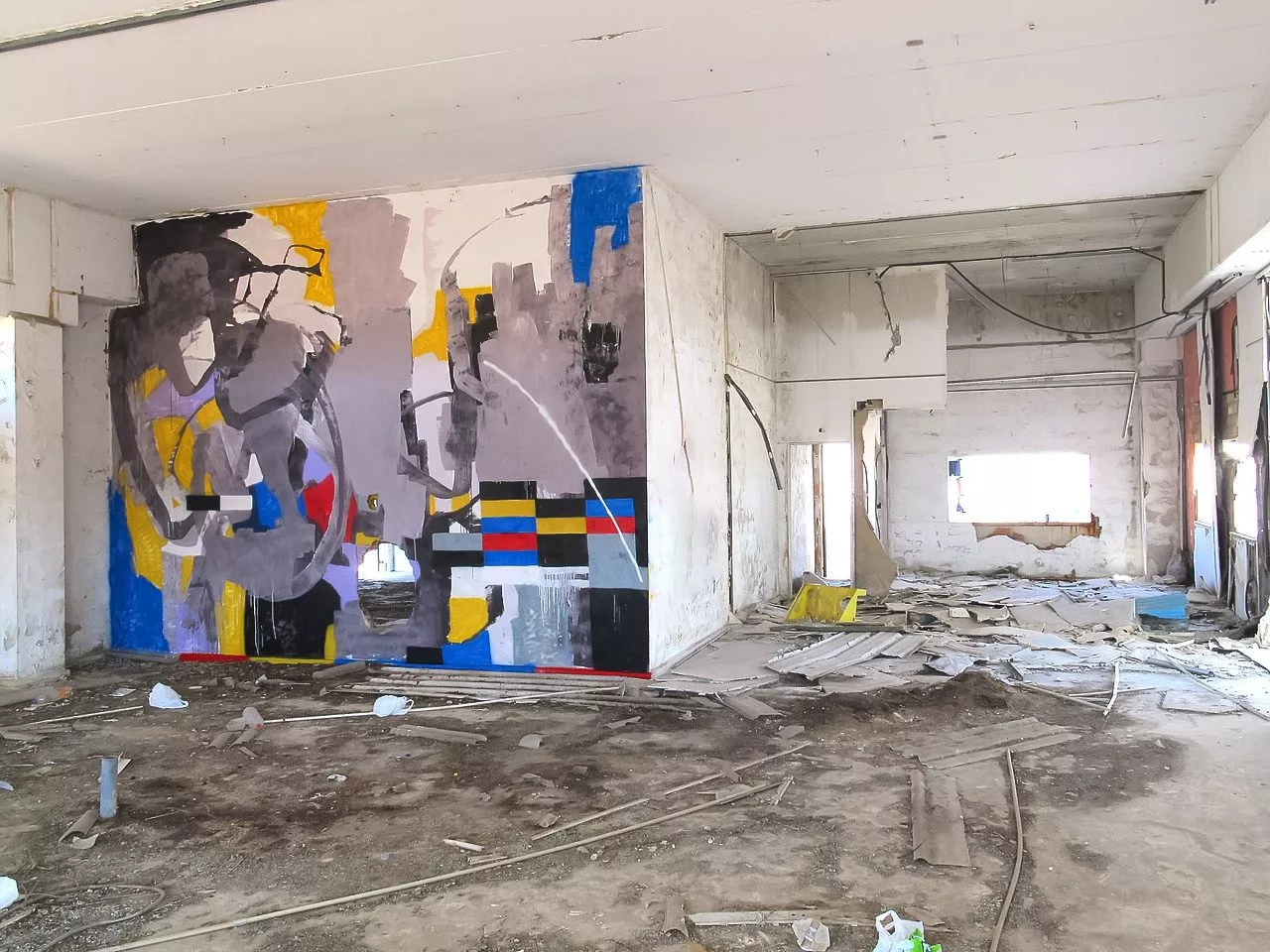
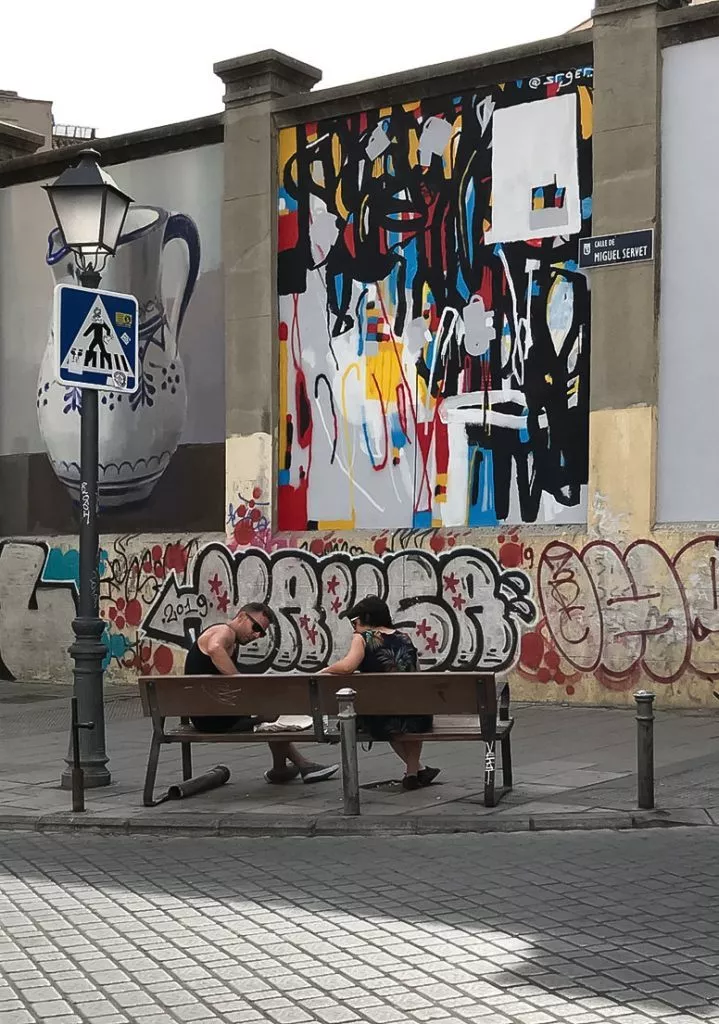
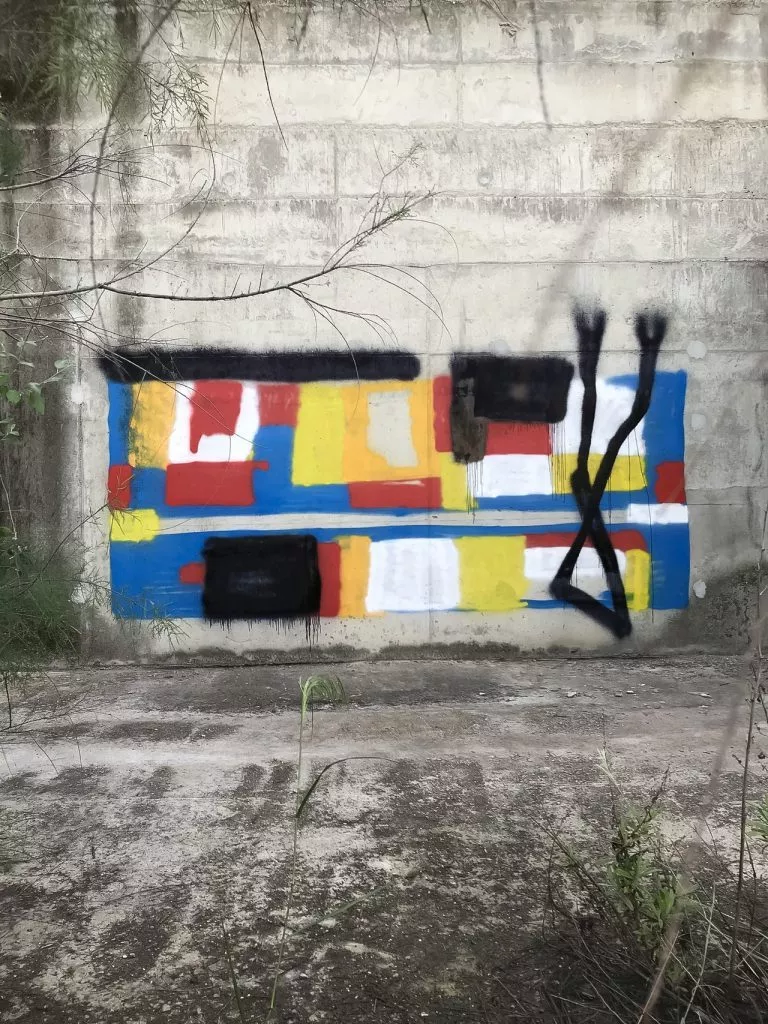
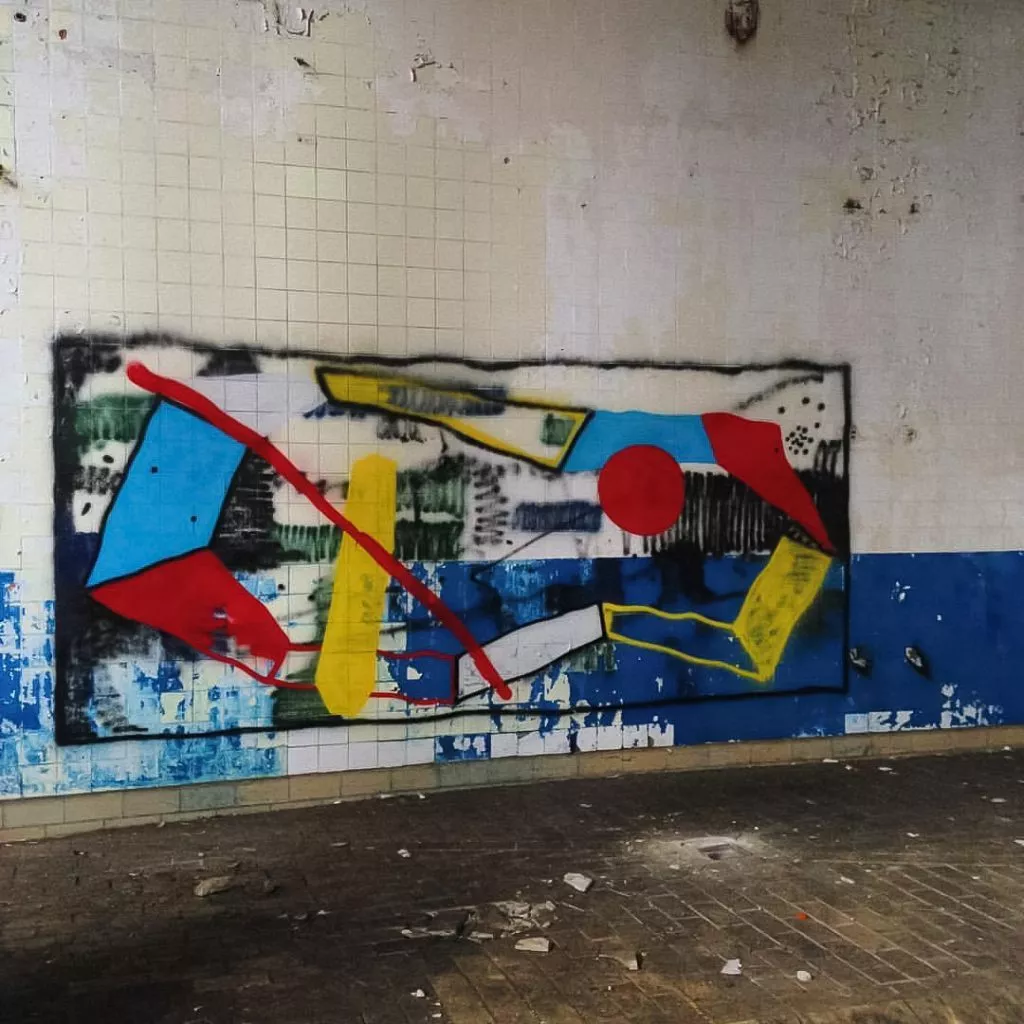
SRGER is always trying to stay free from representative ideas and attributing thus to his art its own reality. And on a wall in a certain environment, the art work in situ adds another reality layer to the work and to the place as well, transforming it in an intrusive but poetic way. Imposing the power and beauty of a lyrical abstract painting to a wall, in an empty space used as a canvas. Some characteristics of the painting by SRGER are rooted as well in Action Painting. Guided by his observing and his intuition, his works refer to an immediate and dynamic painting technique, that he adapts to some of his studio works as well. His works are playing with imperfection and evanescence, they are part of their identity, questioning the finished and unfinished state of a work of art, settled as a necessary condition, as well as the process of the pictorial act. Besides his important studio art practice, going outside to paint, and collaborate with other writers is still essential for him. In recent years he painted many times with ROSH 333 outdoors, and they have developed a real pictorial dialogues, according to SRGER.
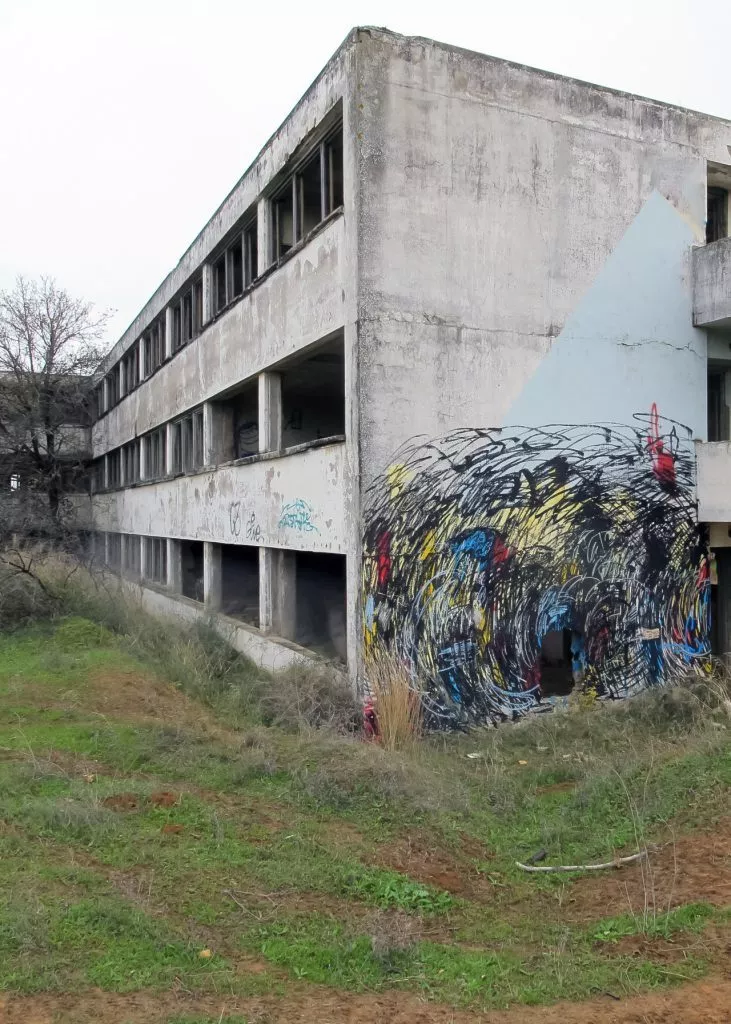
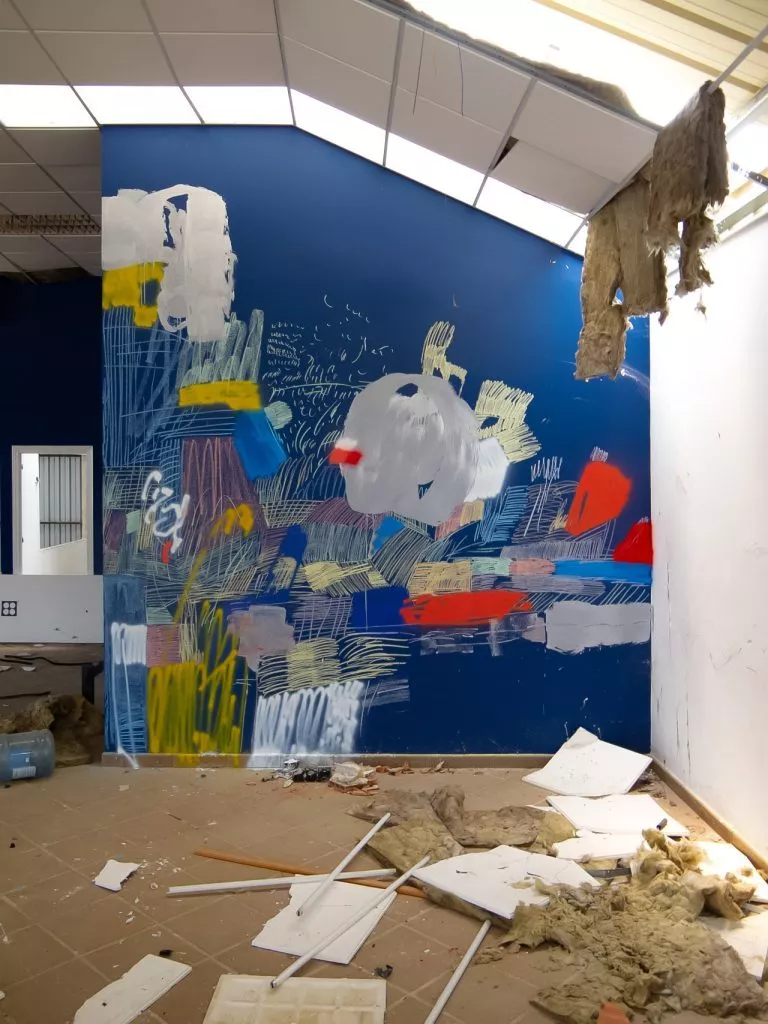
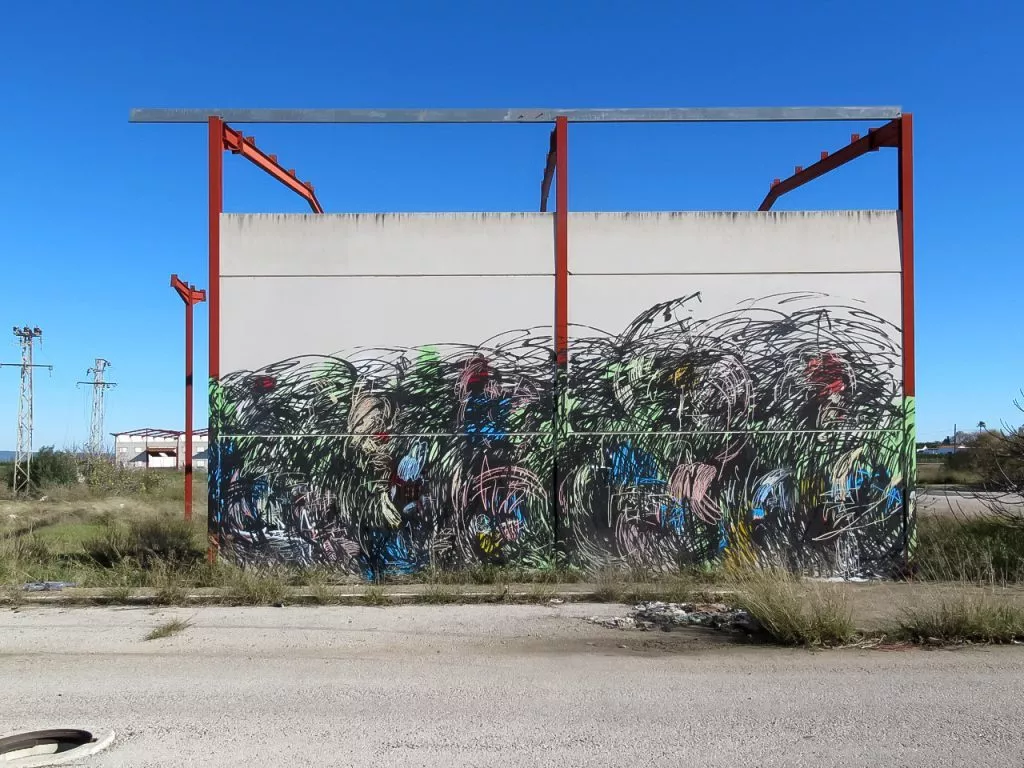
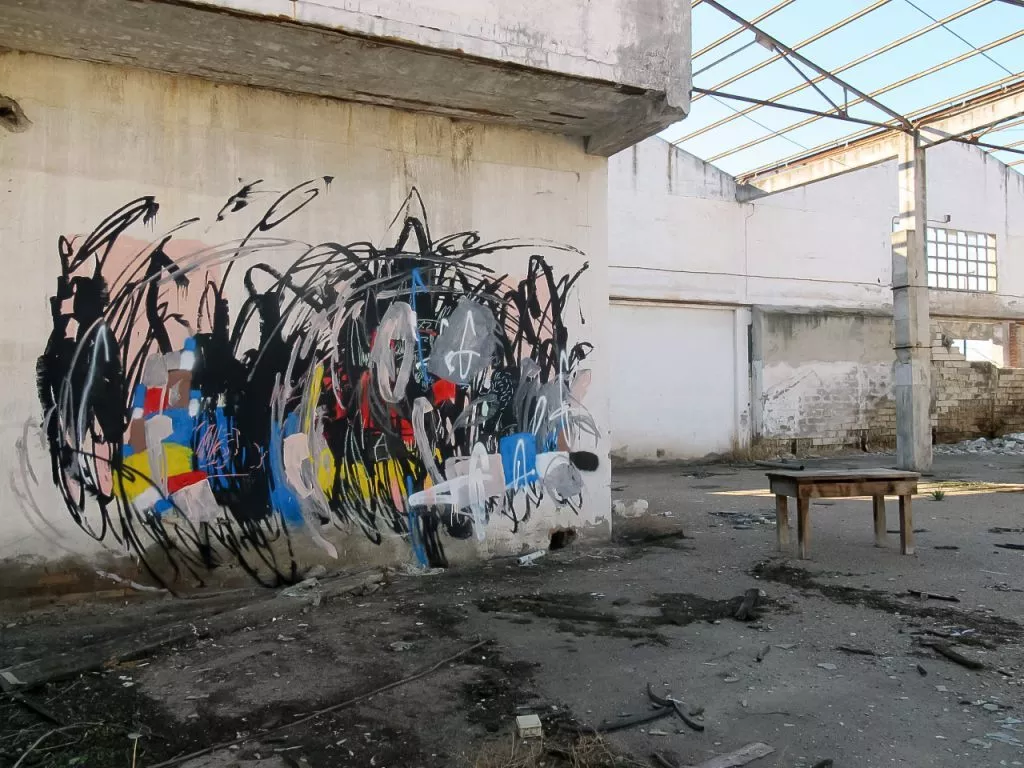
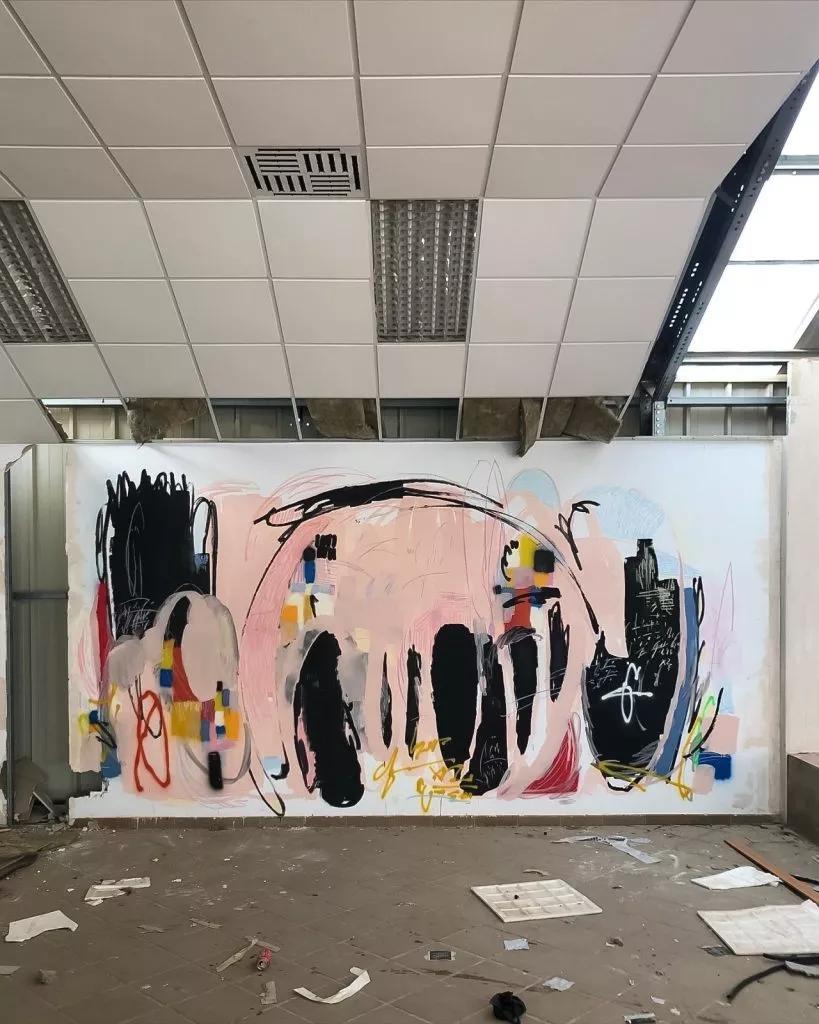
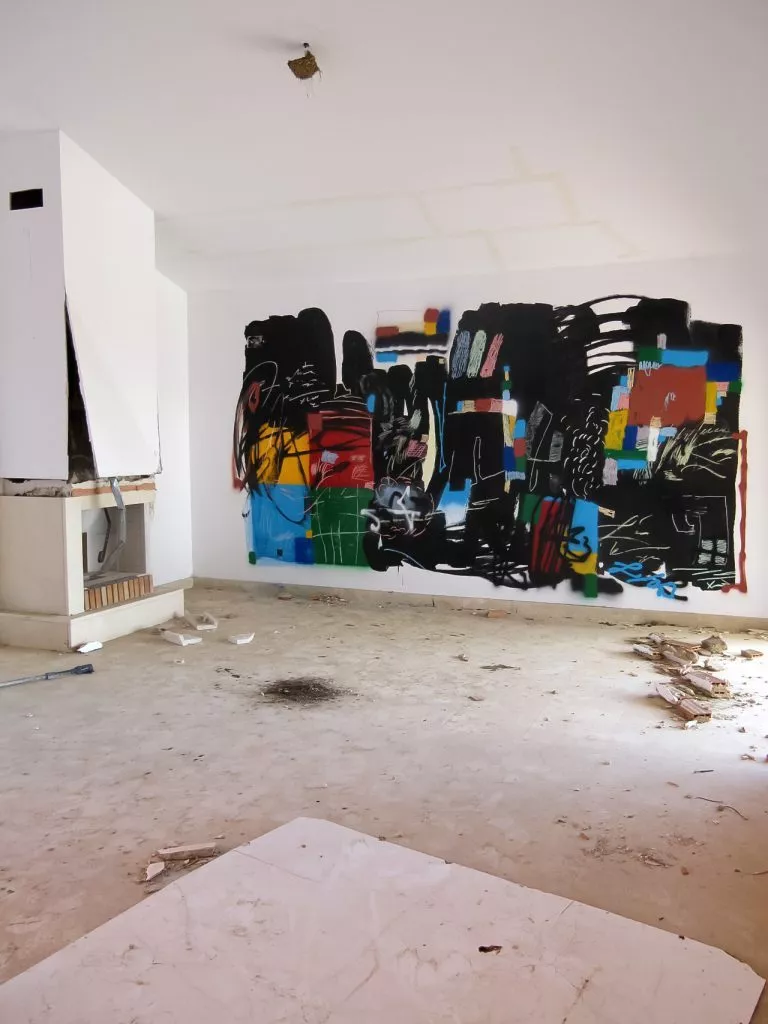
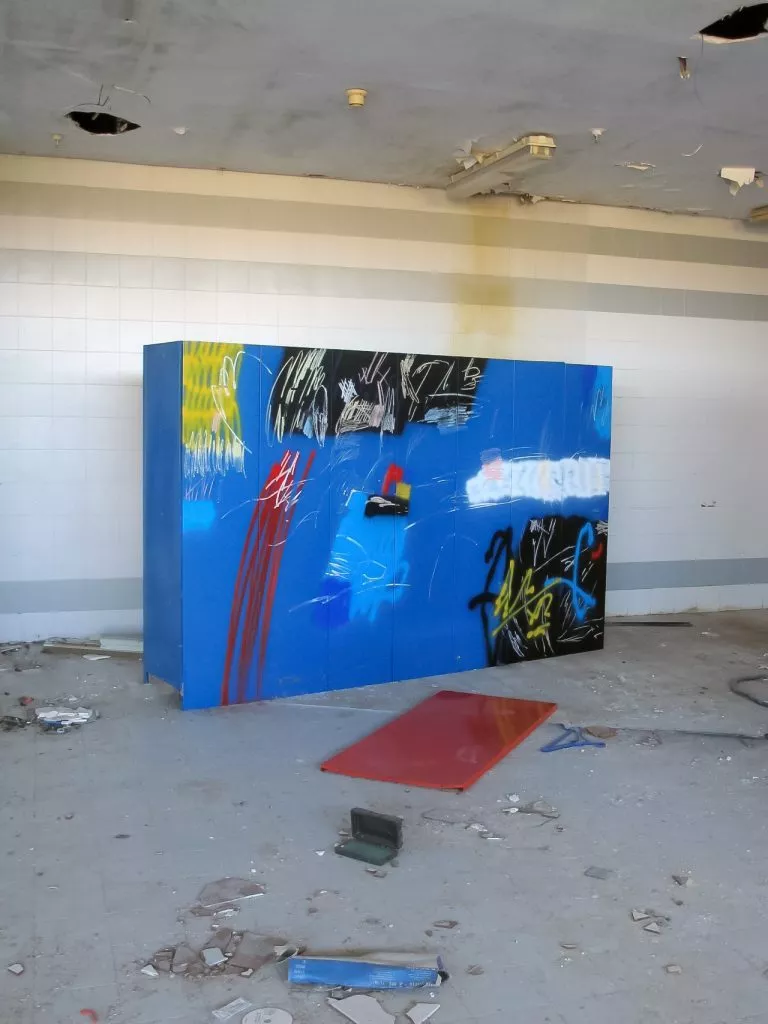
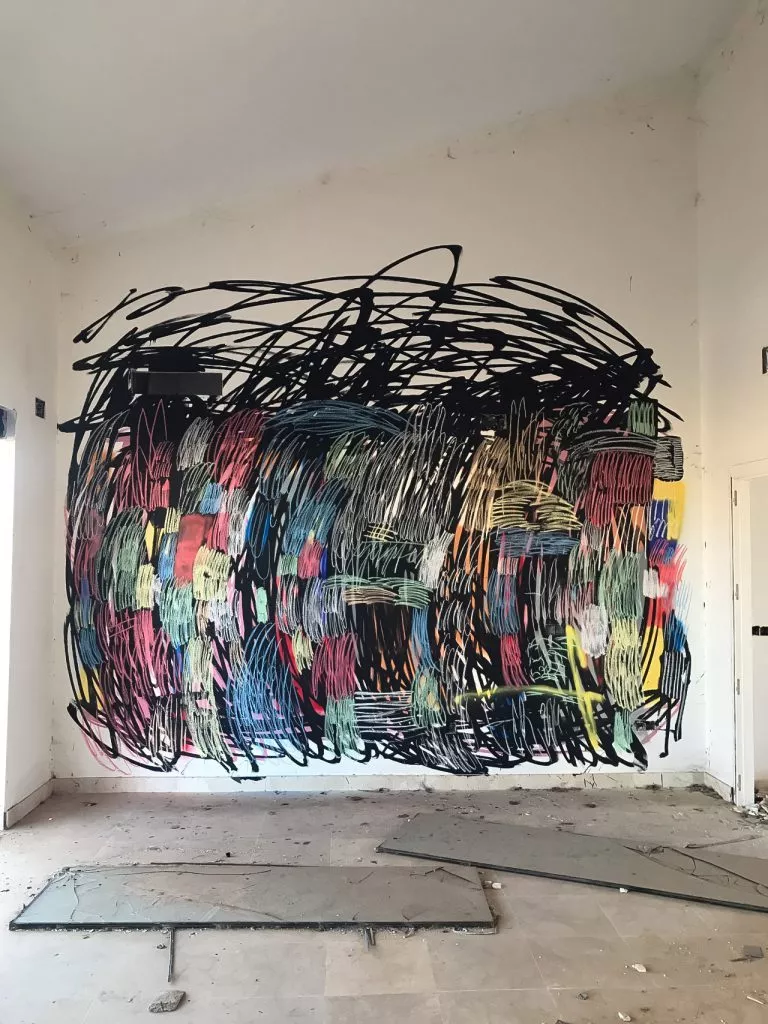
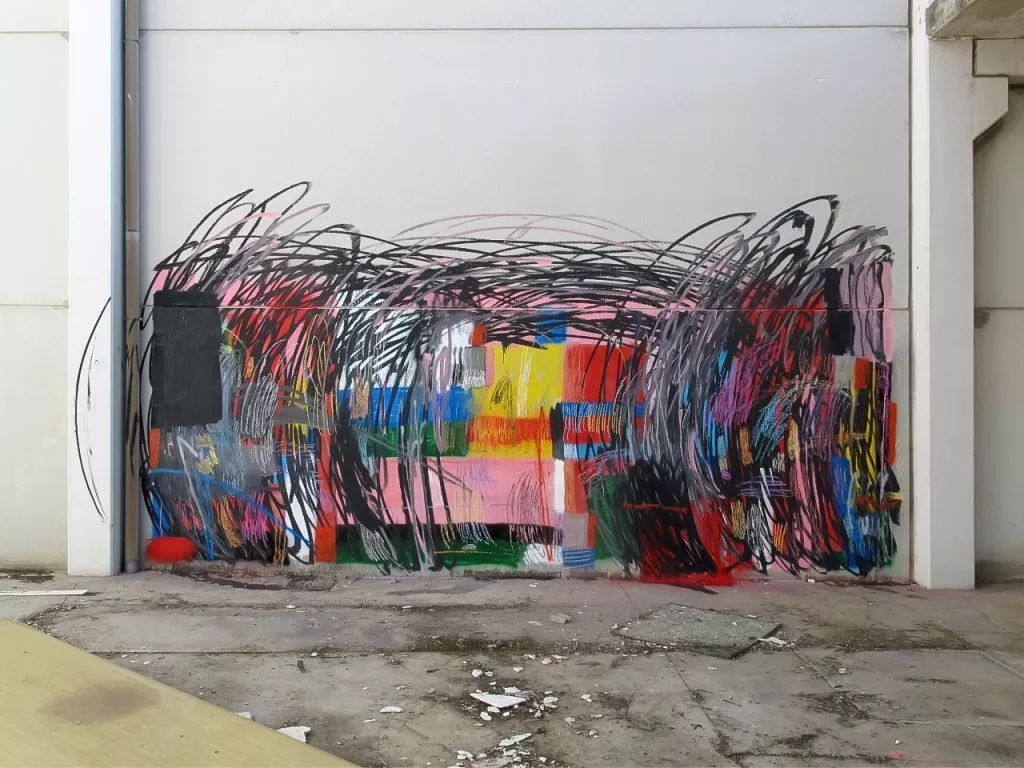
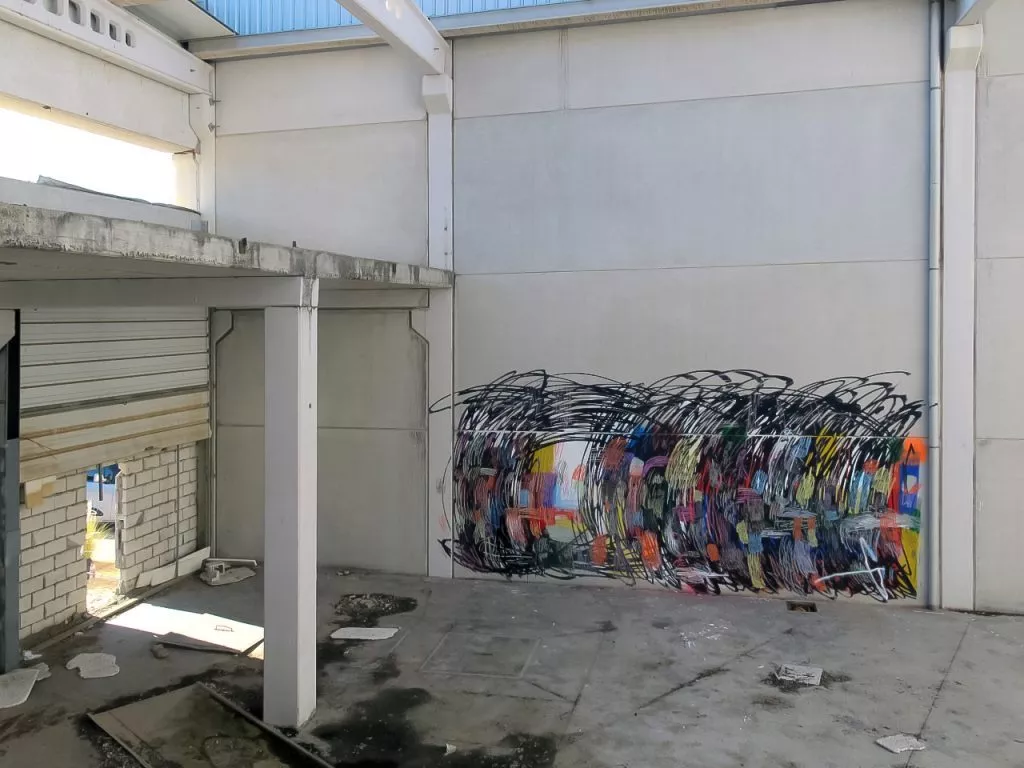
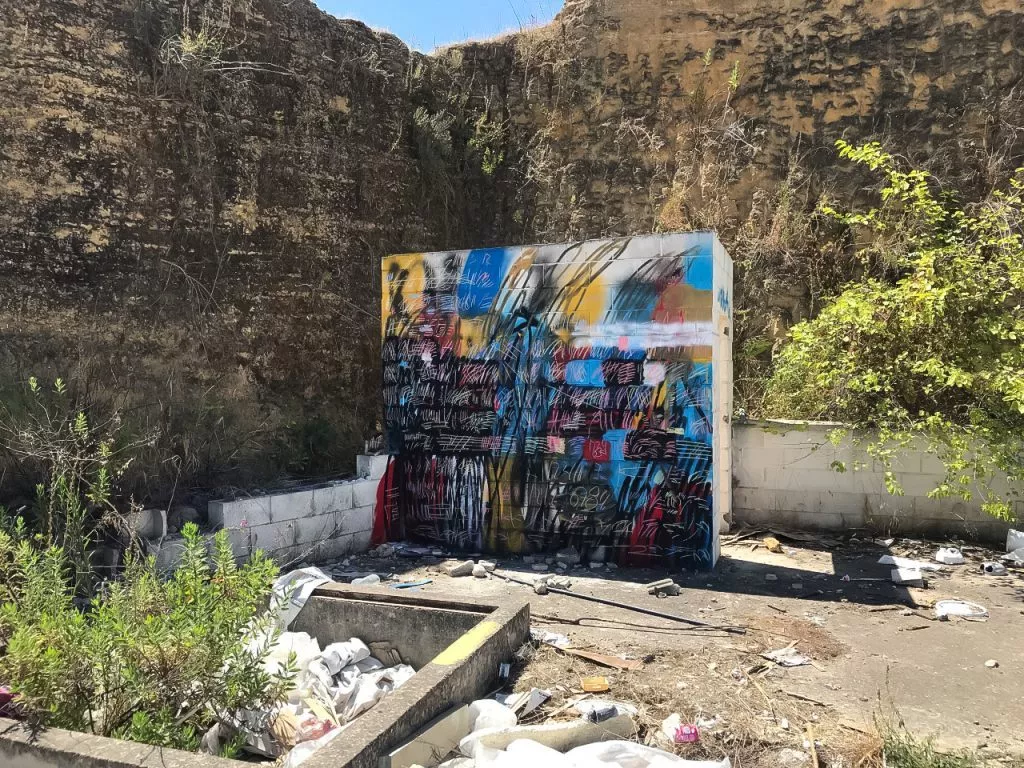

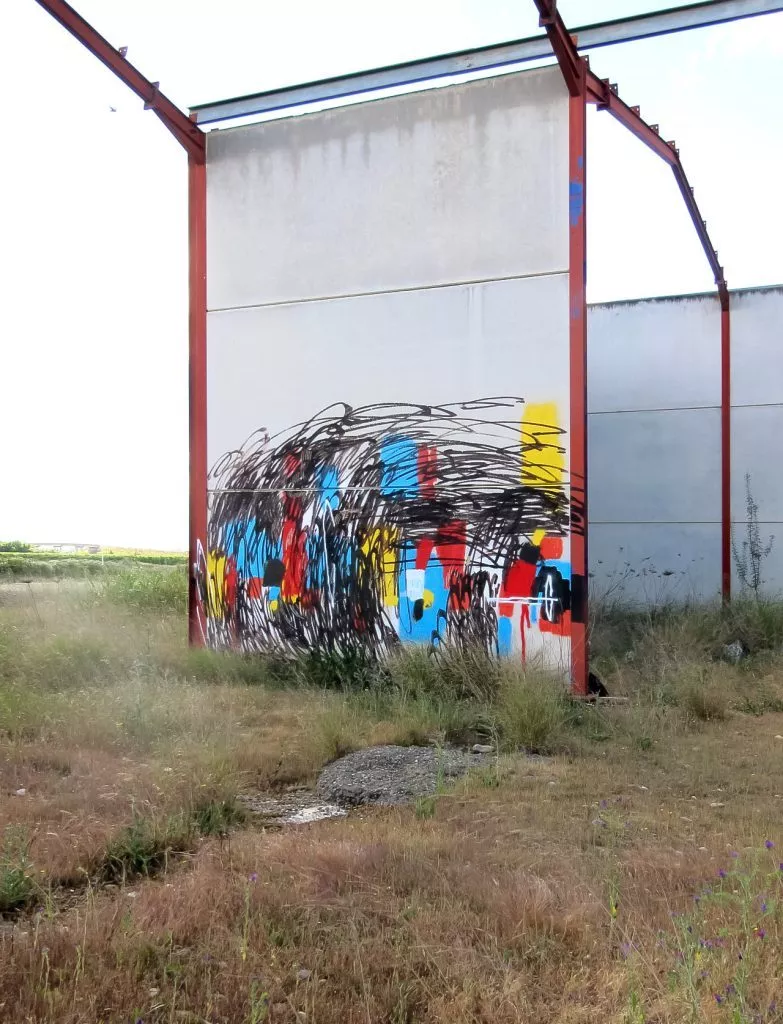
Studio Works: „Trial and error”
An important part of SRGER’s art practice is happening in his studio. Using acrylic, wax, spray and synthetic paints on paper and canvas, he is also creating installations and wall paintings in exhibitions spaces. The Spanish artist is furthermore developing his visual language on other formats and with other techniques. About the relation between his works outdoors and indoors, he explains: „I think one is inspired by the other, but obviously the formats and tools are different. It is something I ask myself from time to time, my painting in the studio becomes more careful and sometimes more minimalist. However, outdoors I feel that I am more free and more explosive.“ His work in the studio is continuous, he says, he always focuses on a precise idea or produces works for a particular project, so that his paintings have an end. SRGER’s pictorial research is still open-minded and based on observing, searching and doing: „I try to experiment all the time, I believe that “trial and error” is essential for my way of doing things.“ The artist likes the idea of infinite variations, the game with the finished and unfinished, playing with imperfections, contradictions and contrasts, creating challenging pictorial tensions in paintings that contain this particular energy and power.
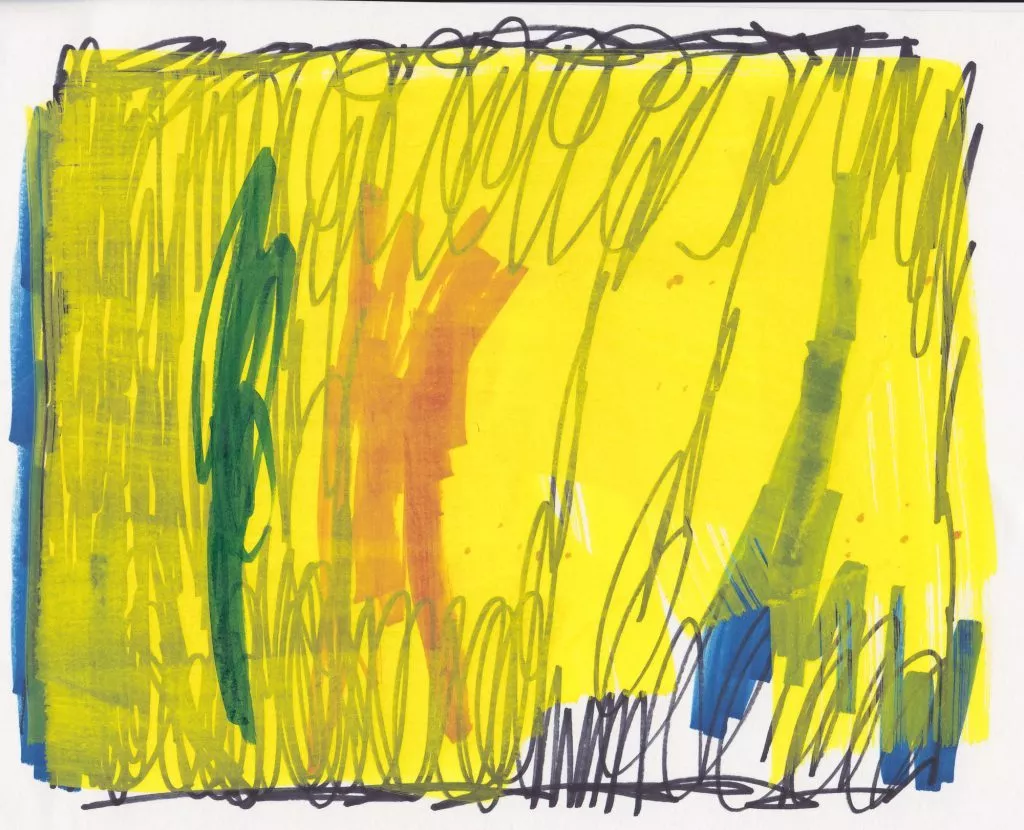
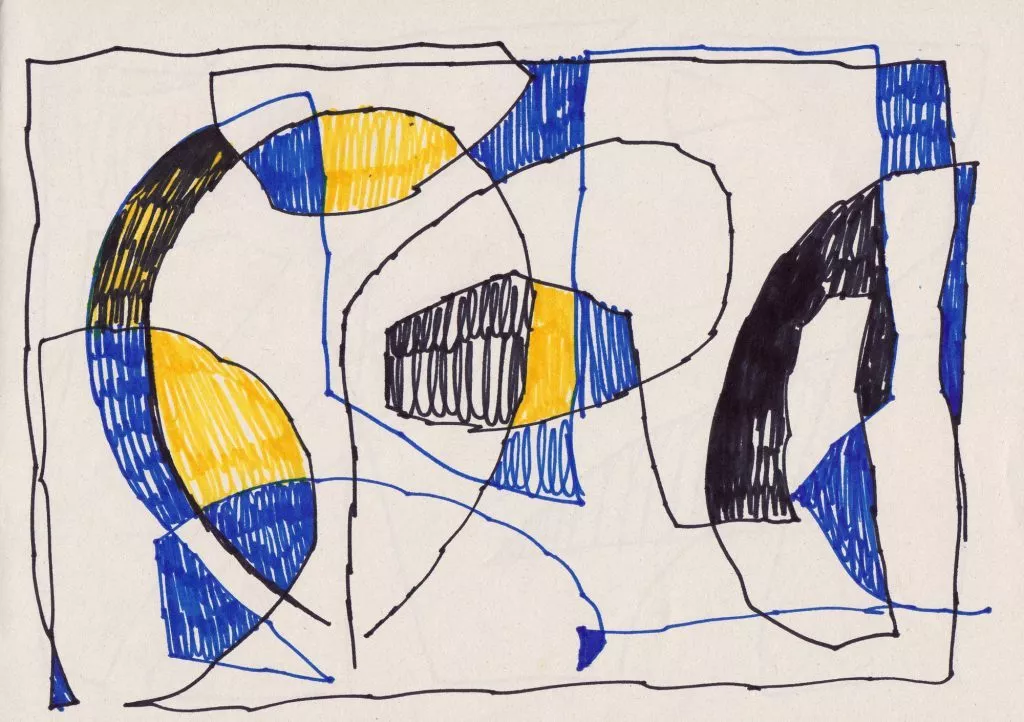
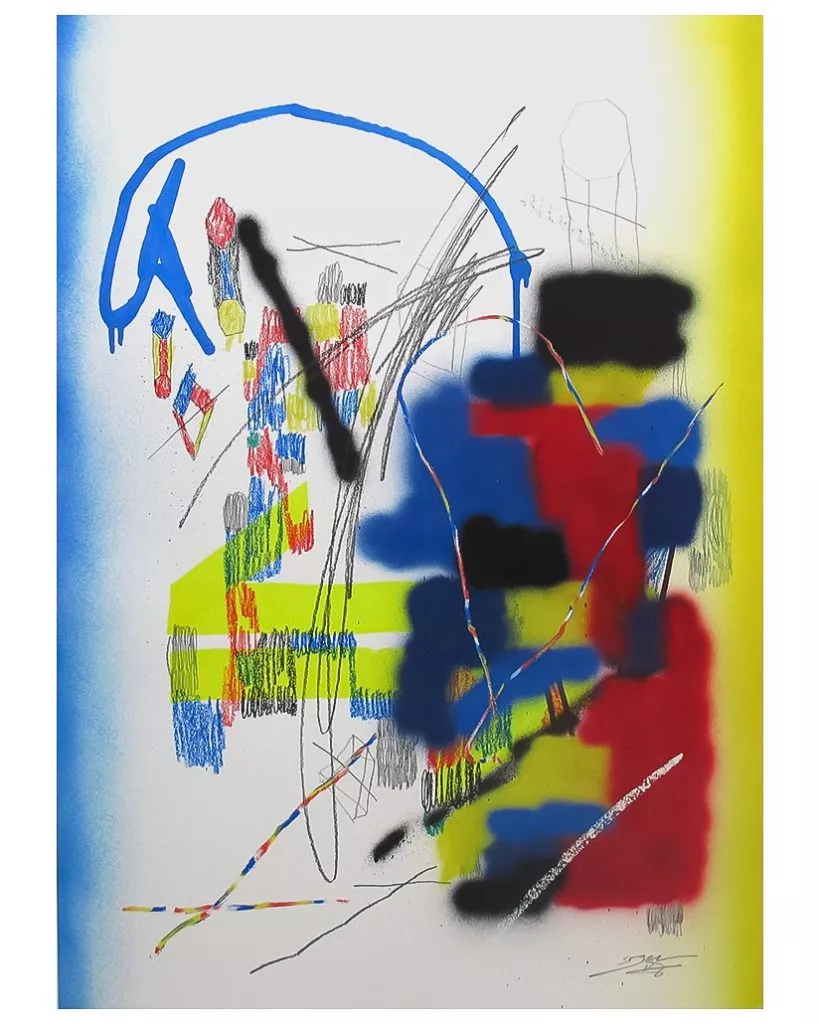
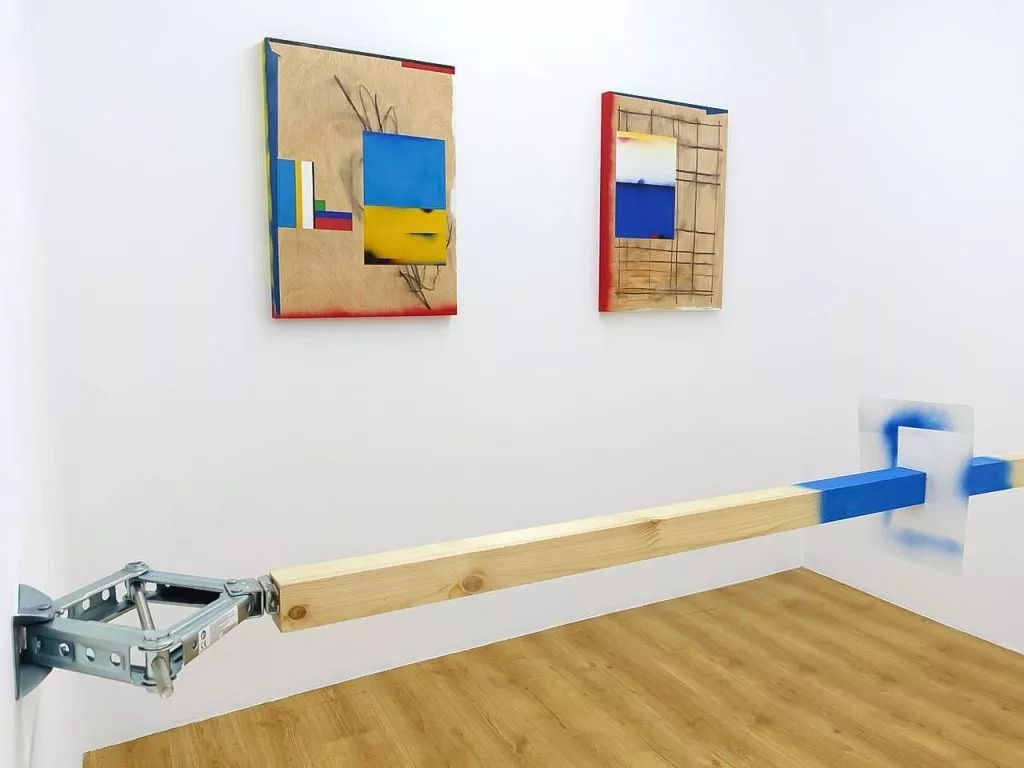
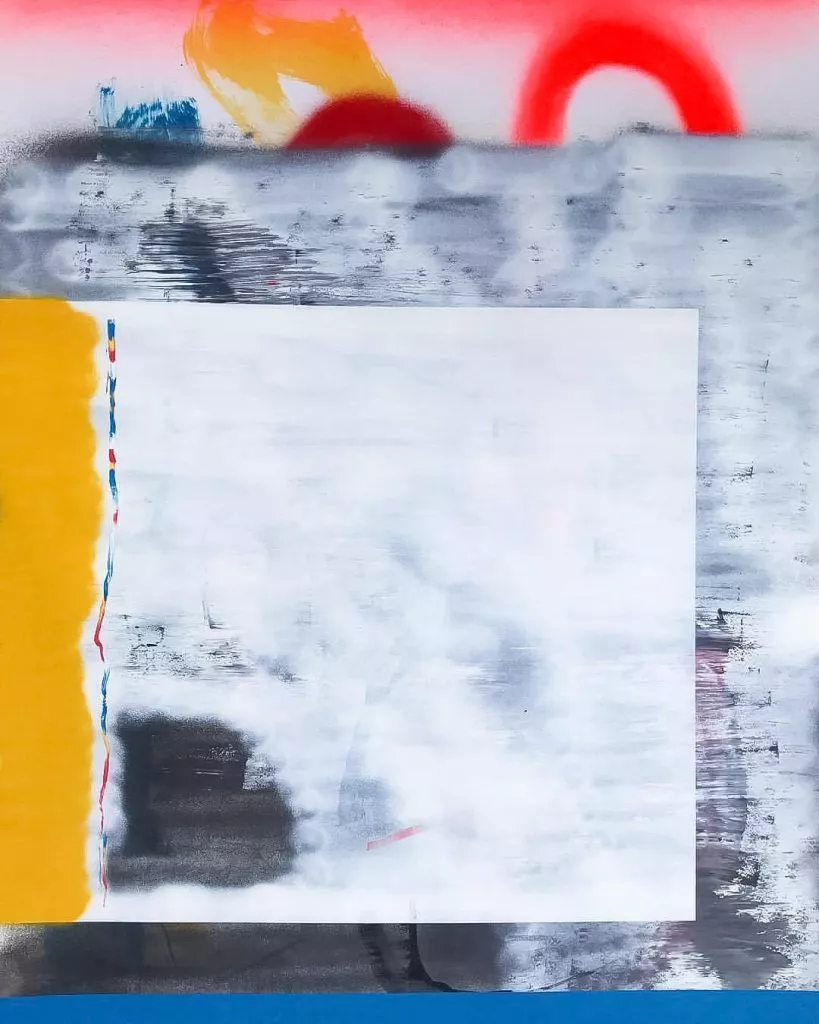
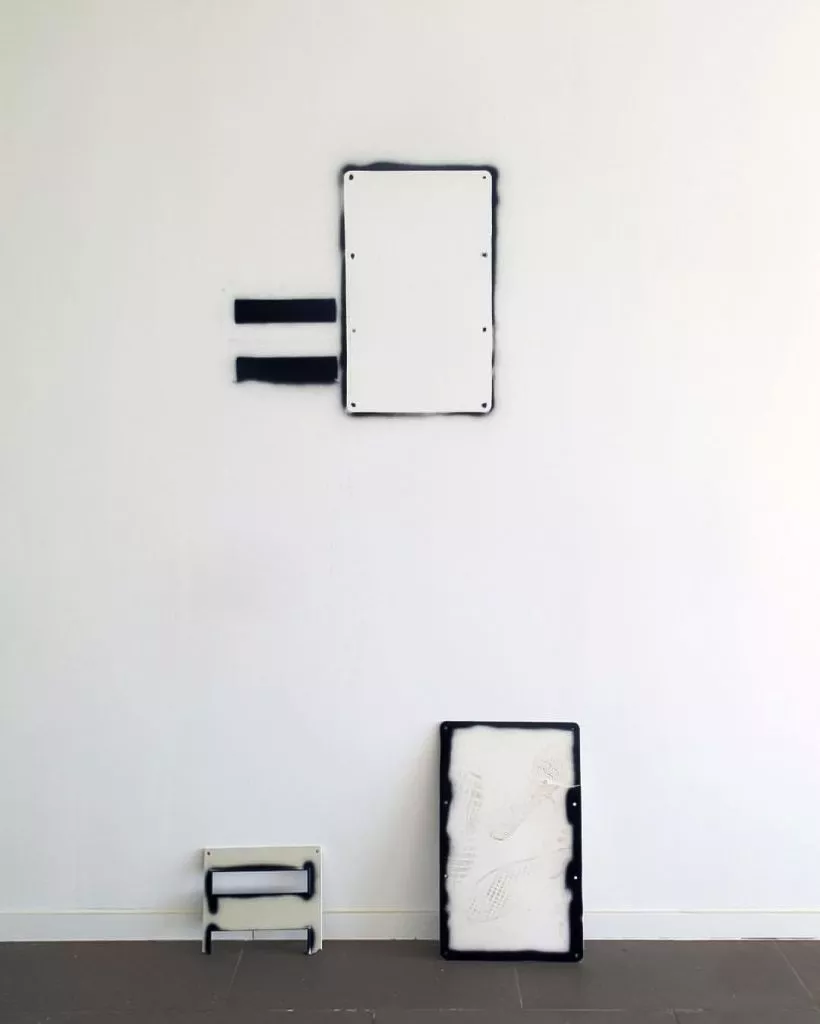
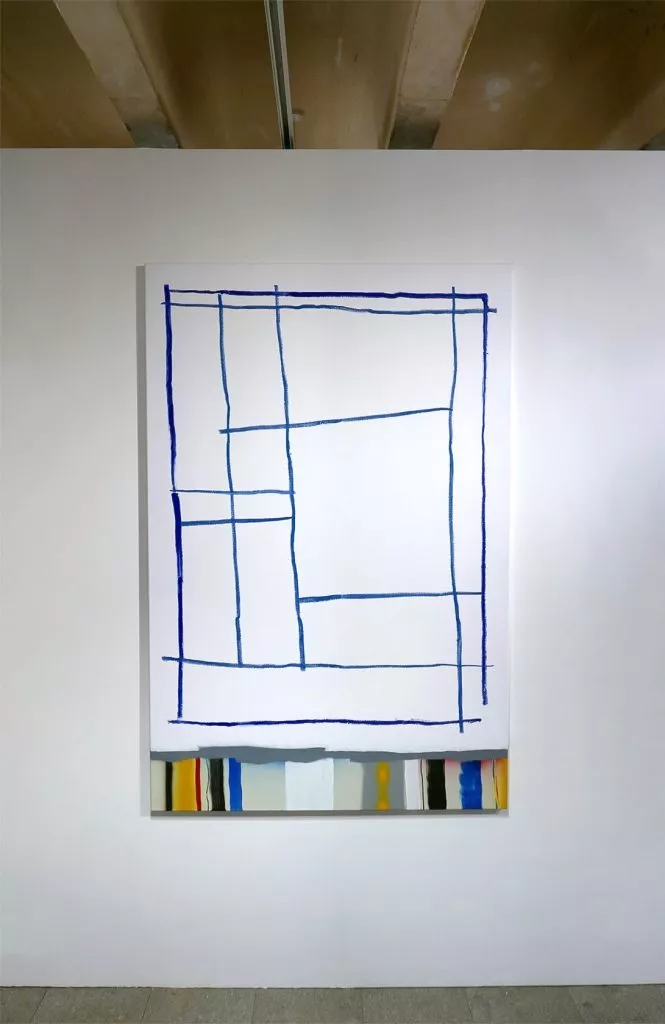
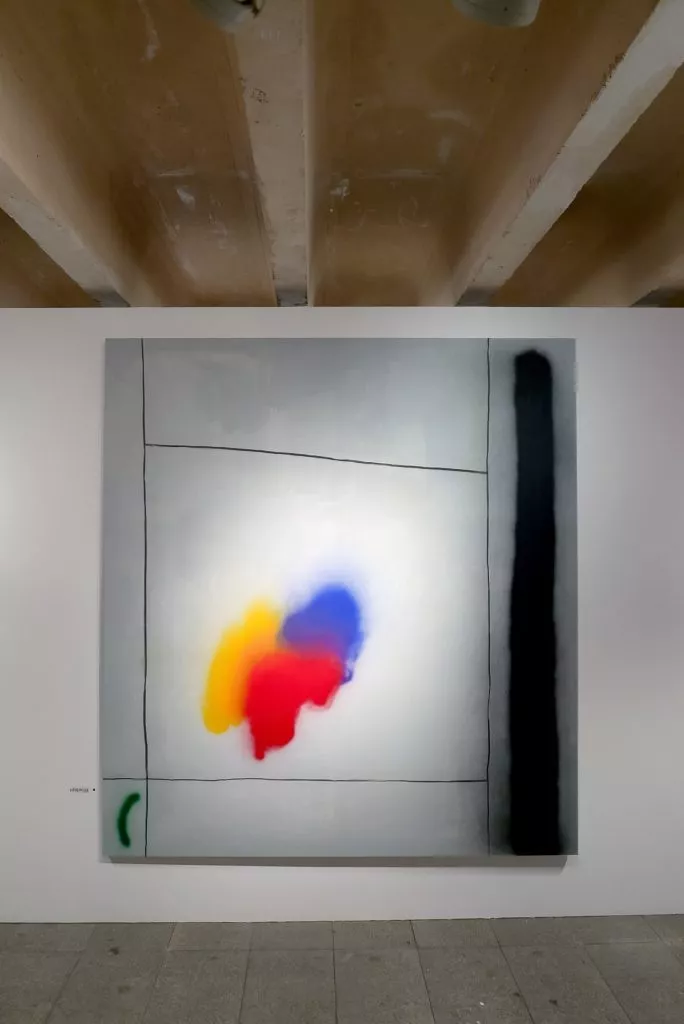
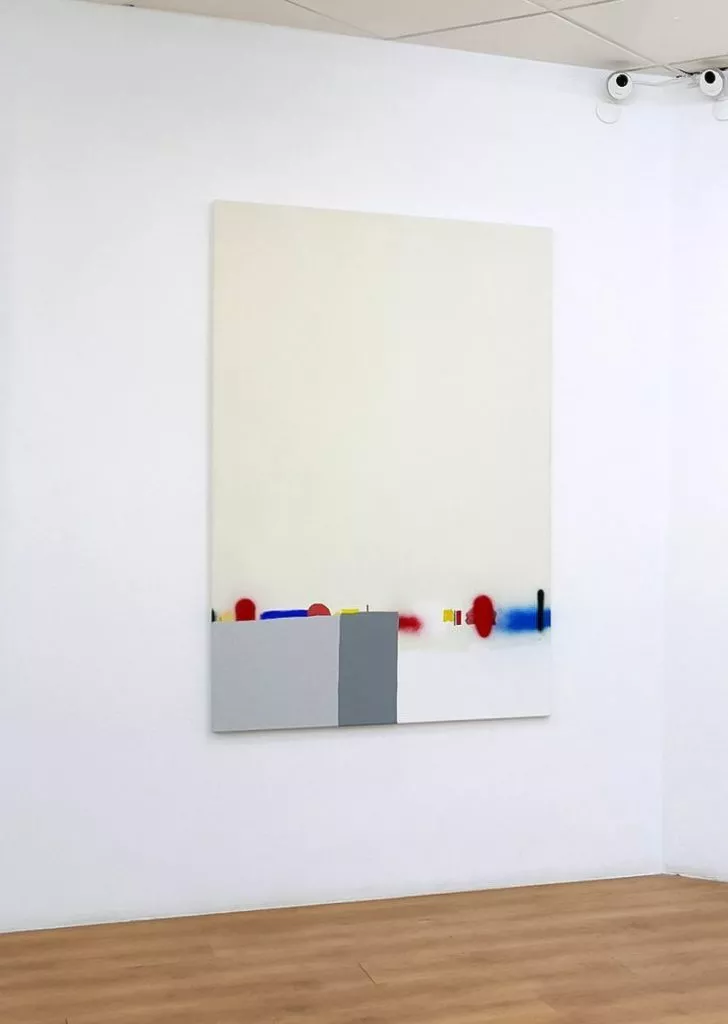
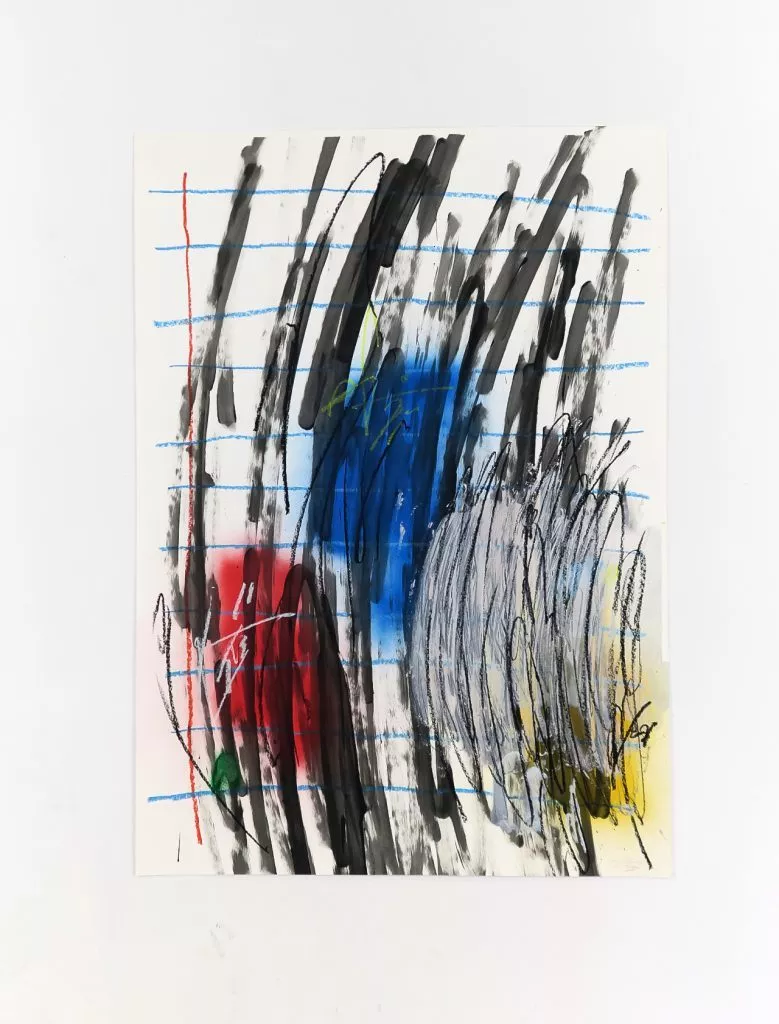
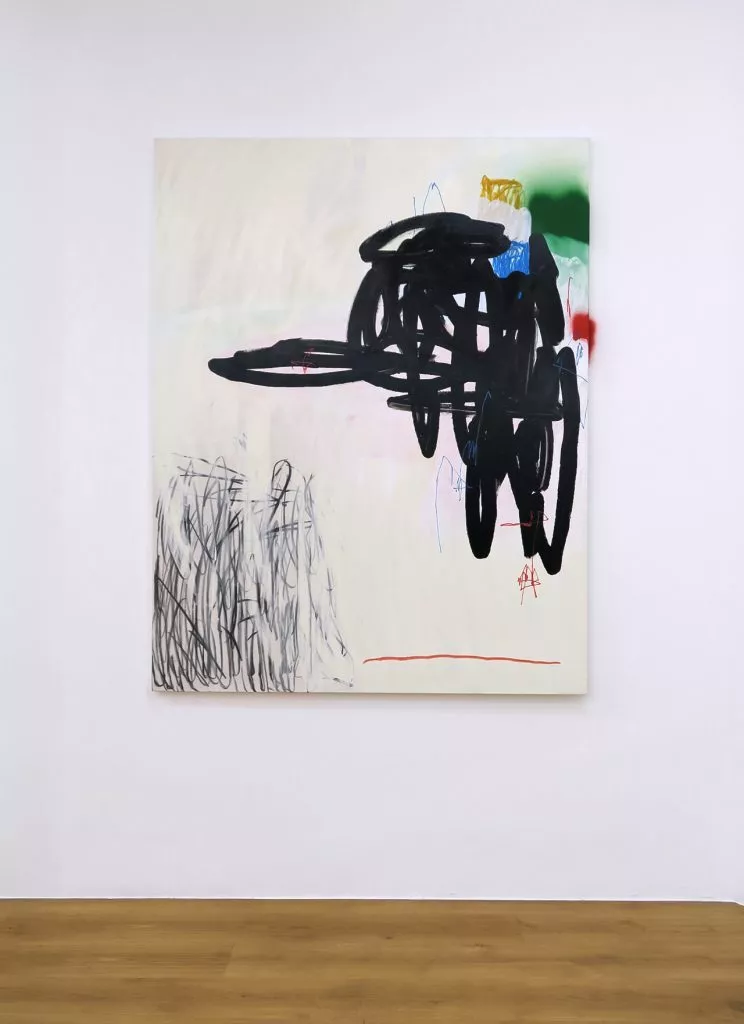
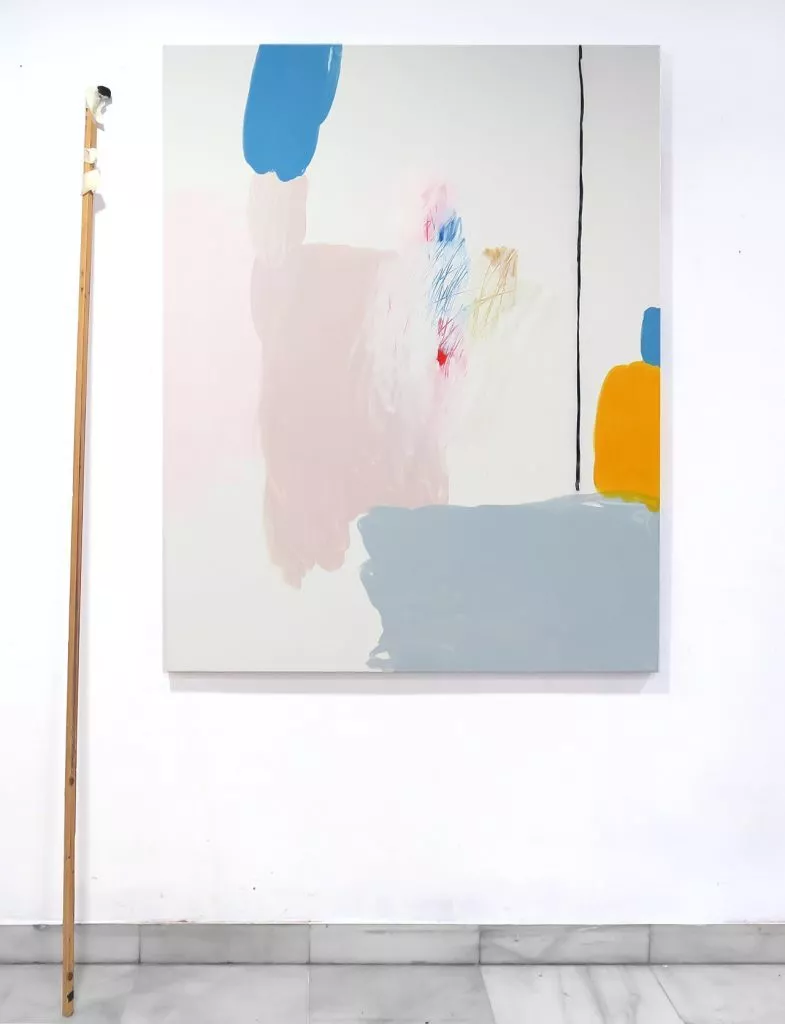
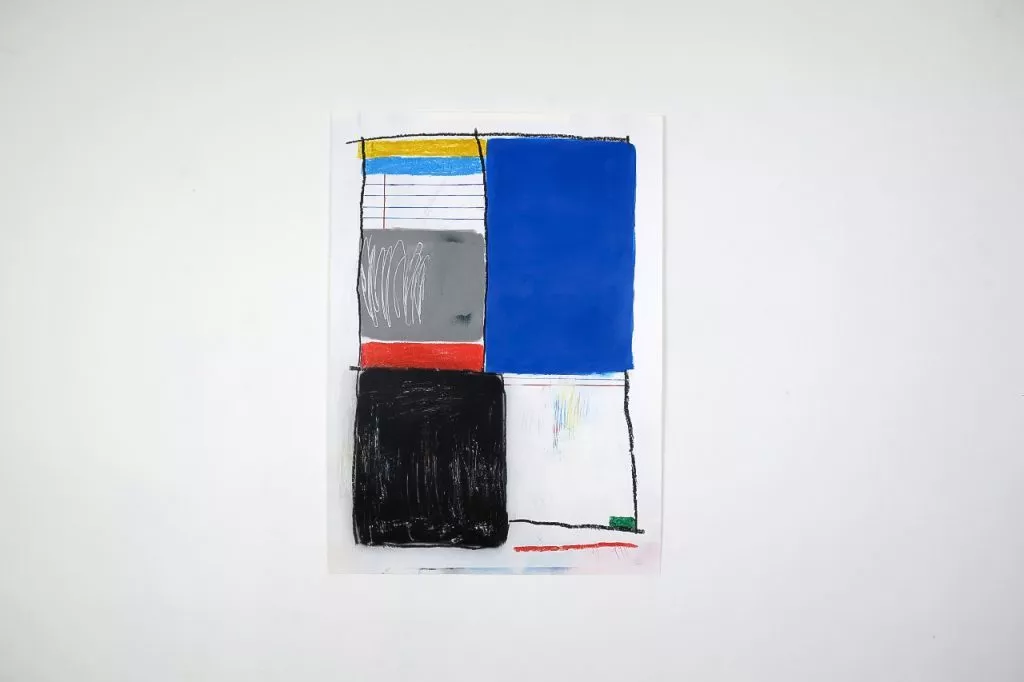
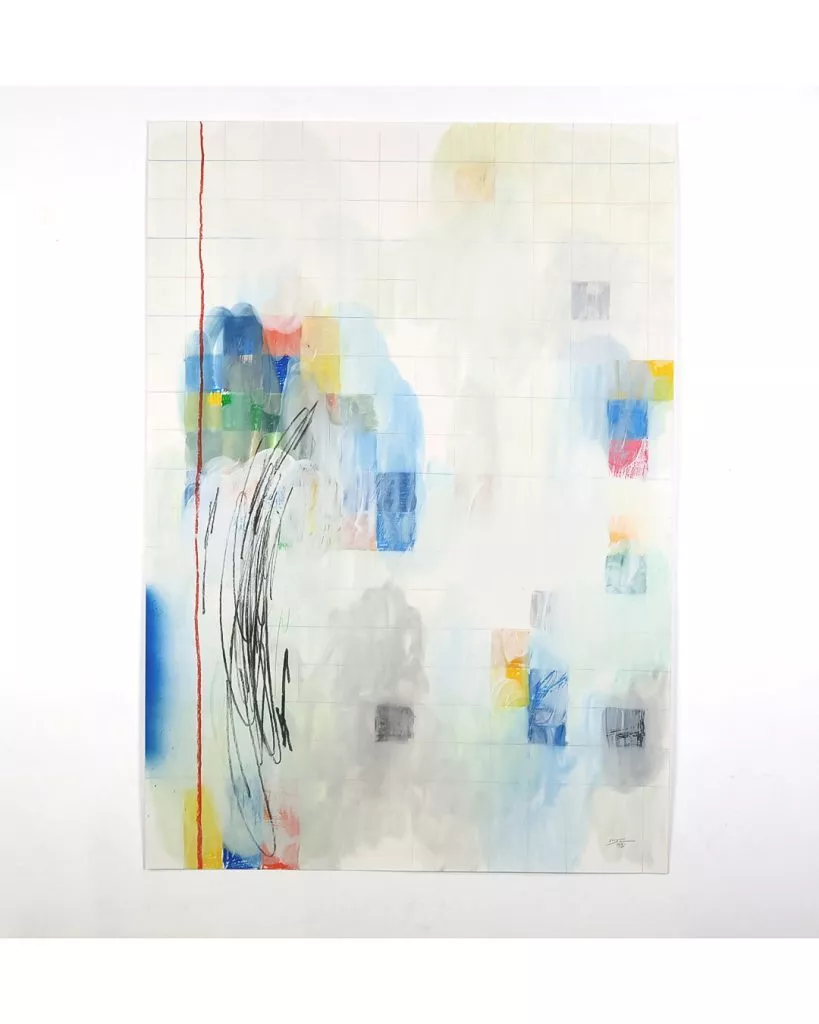
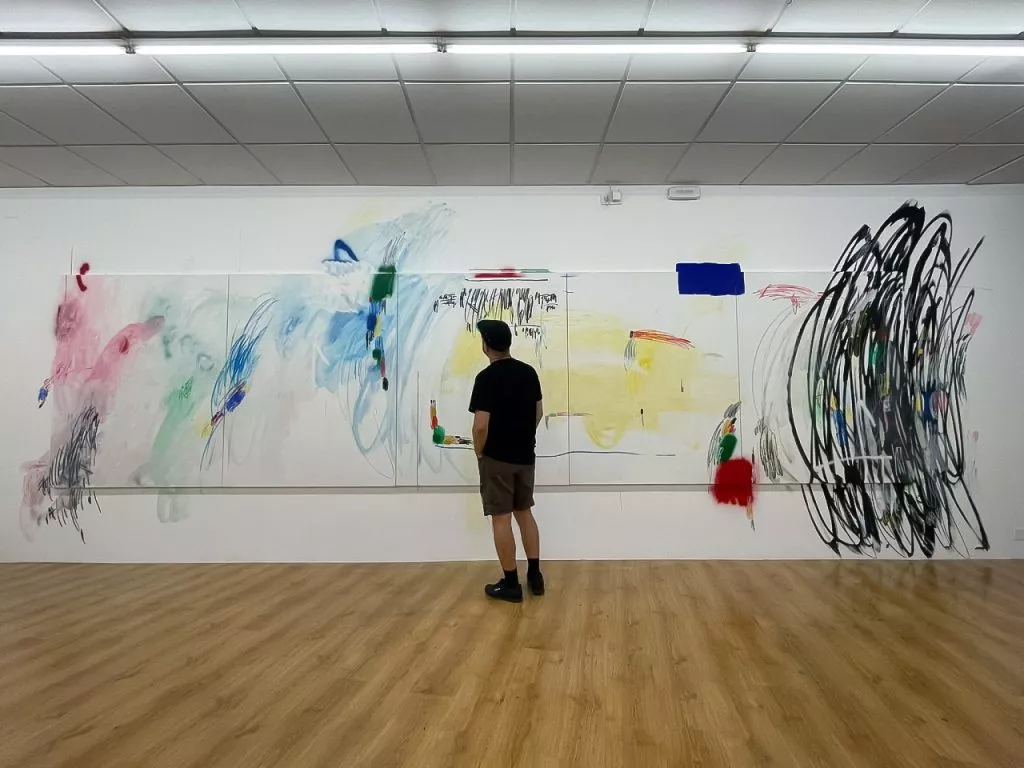
496 views
Categories
Tags:

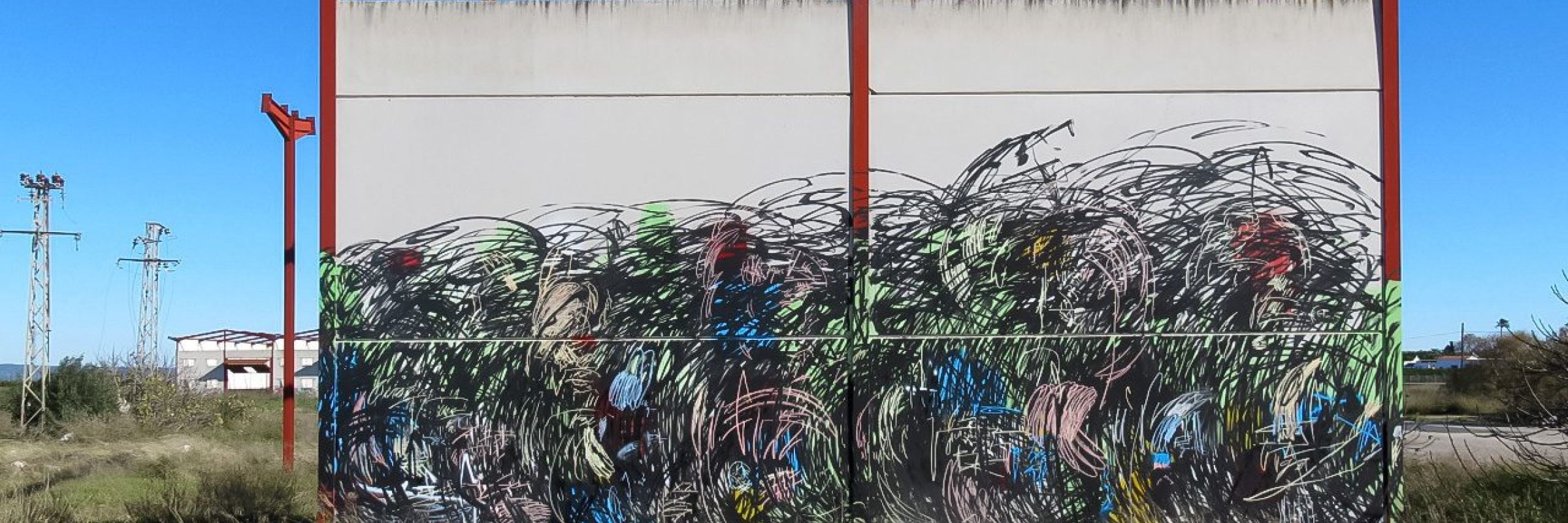

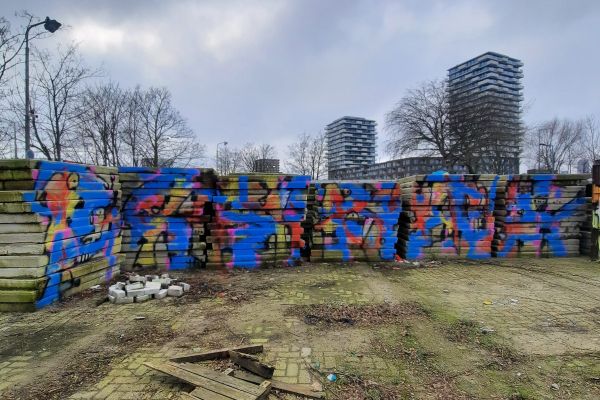
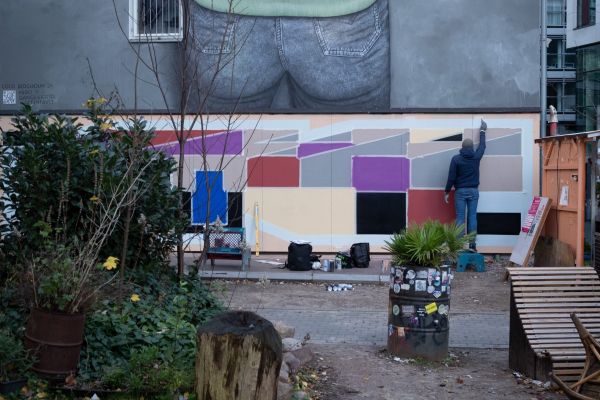
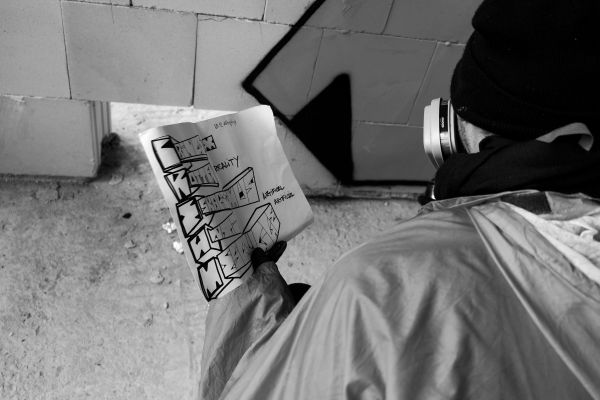
Leave a Reply